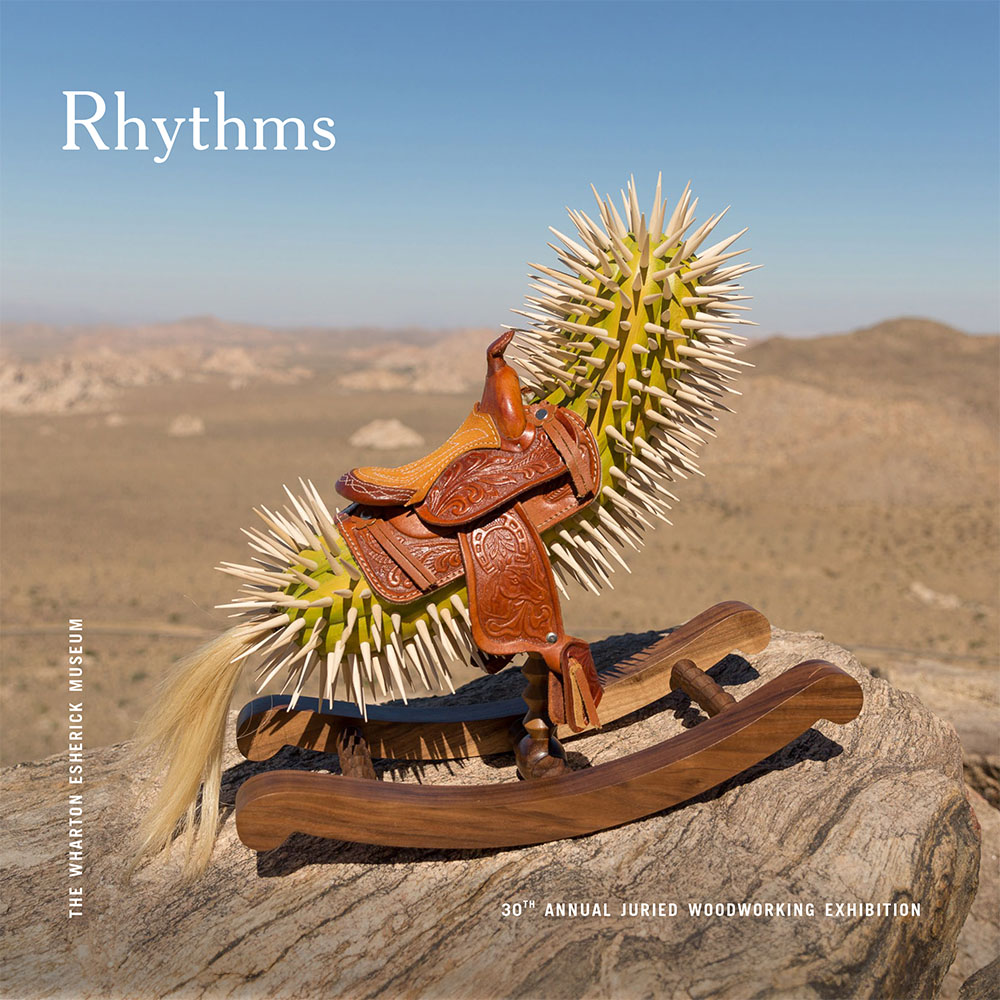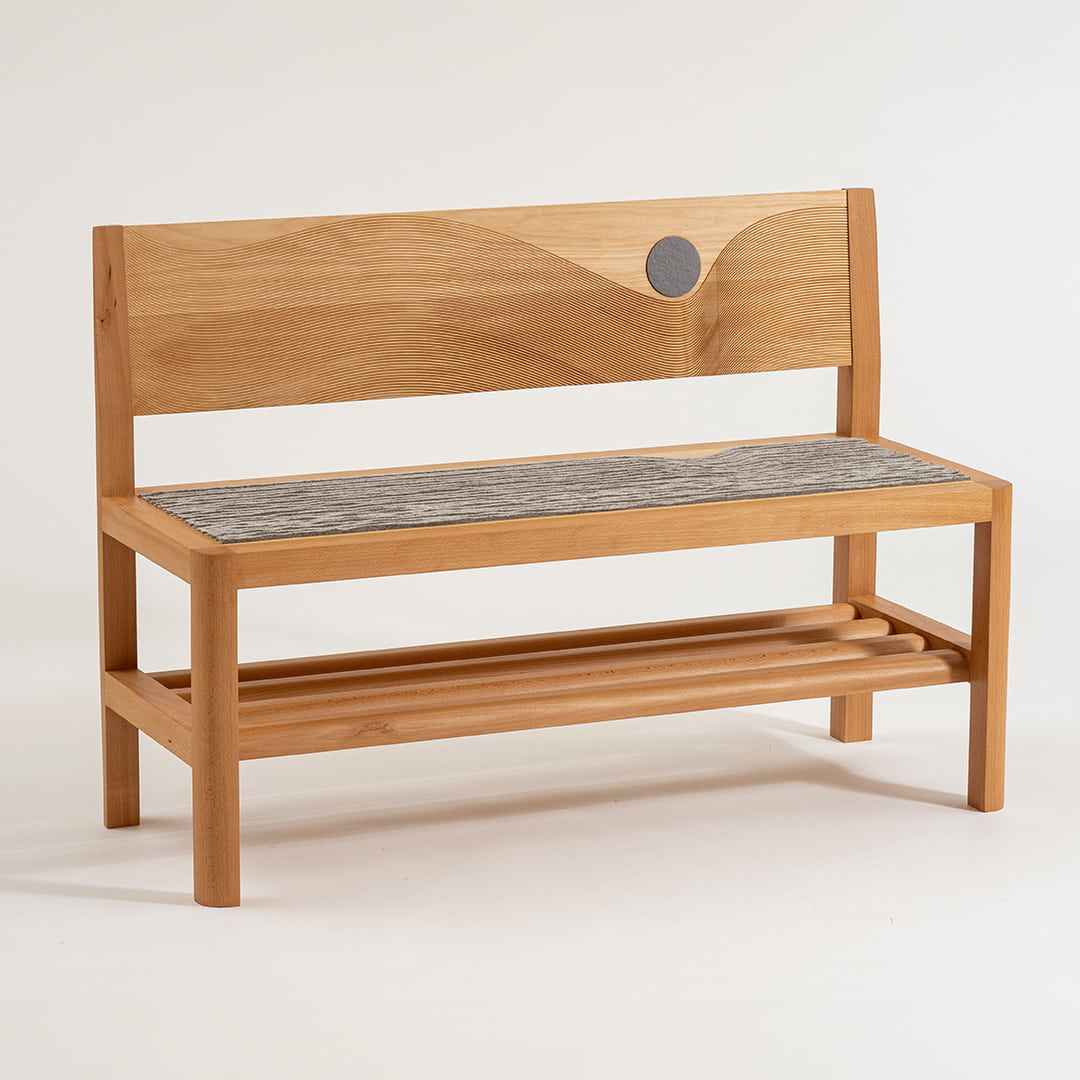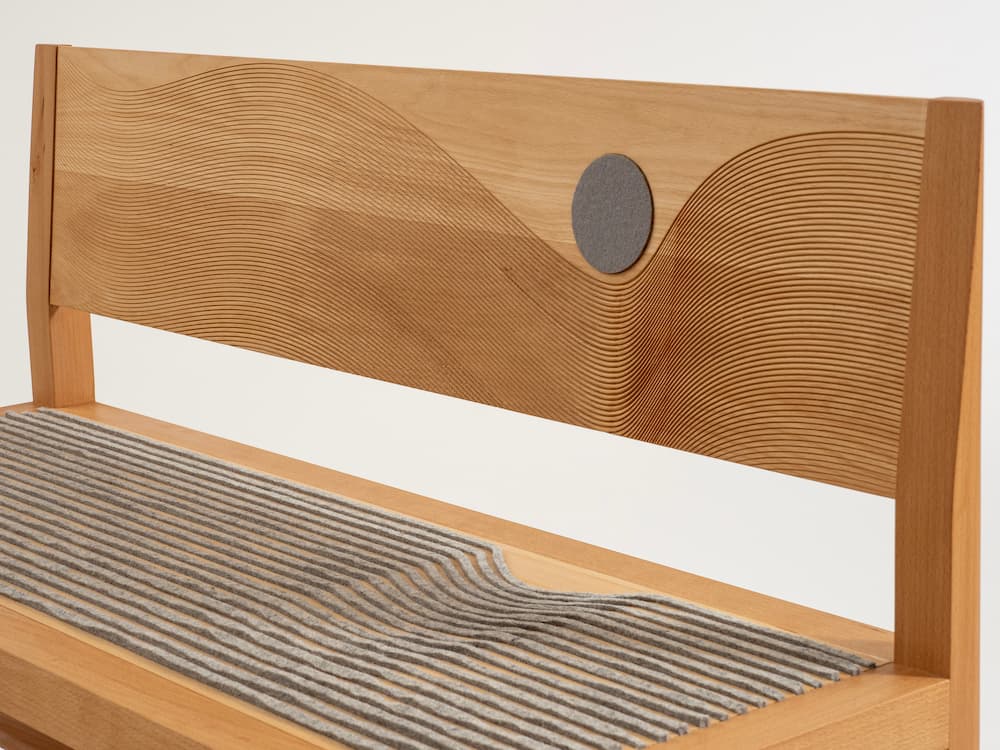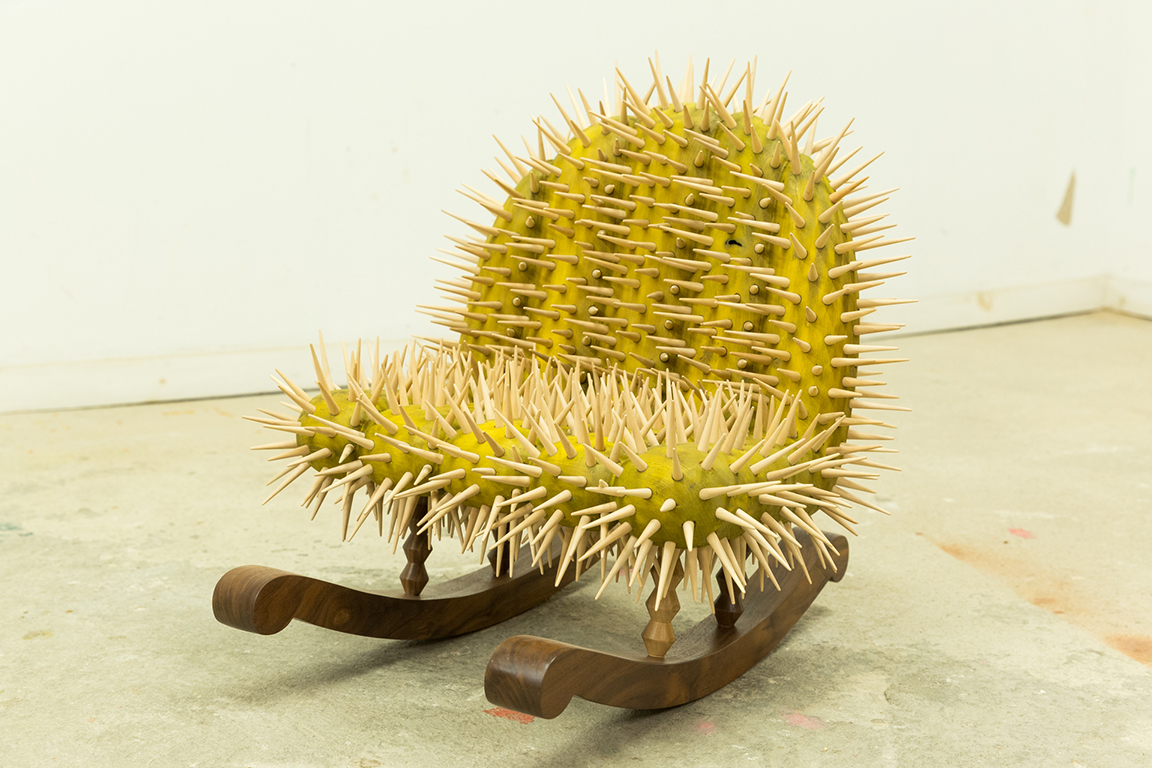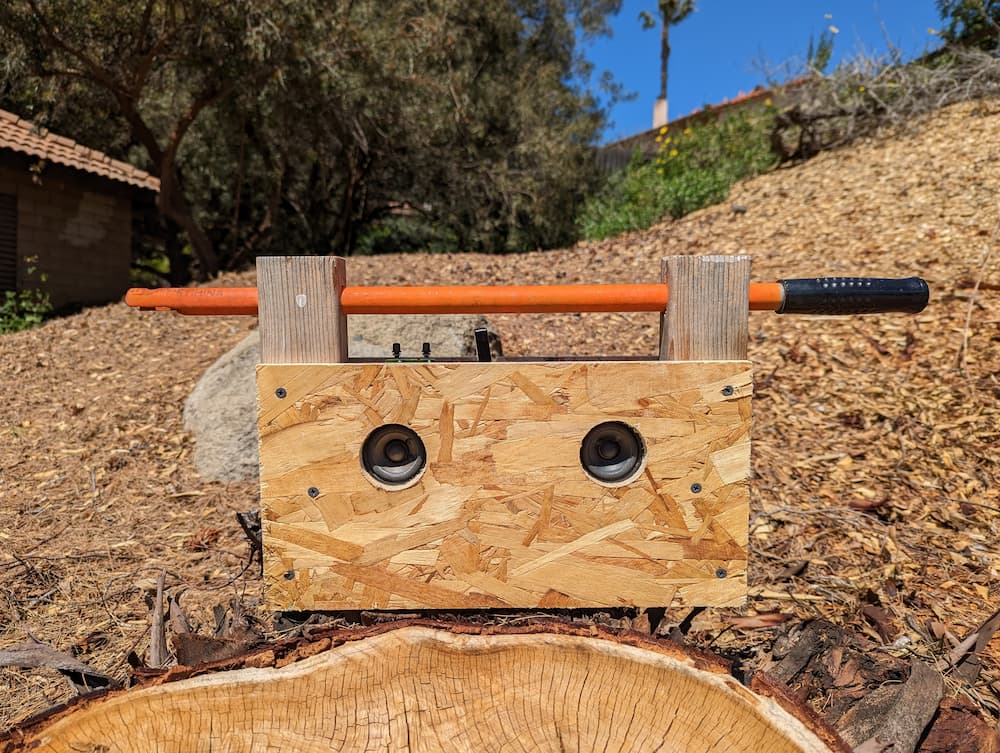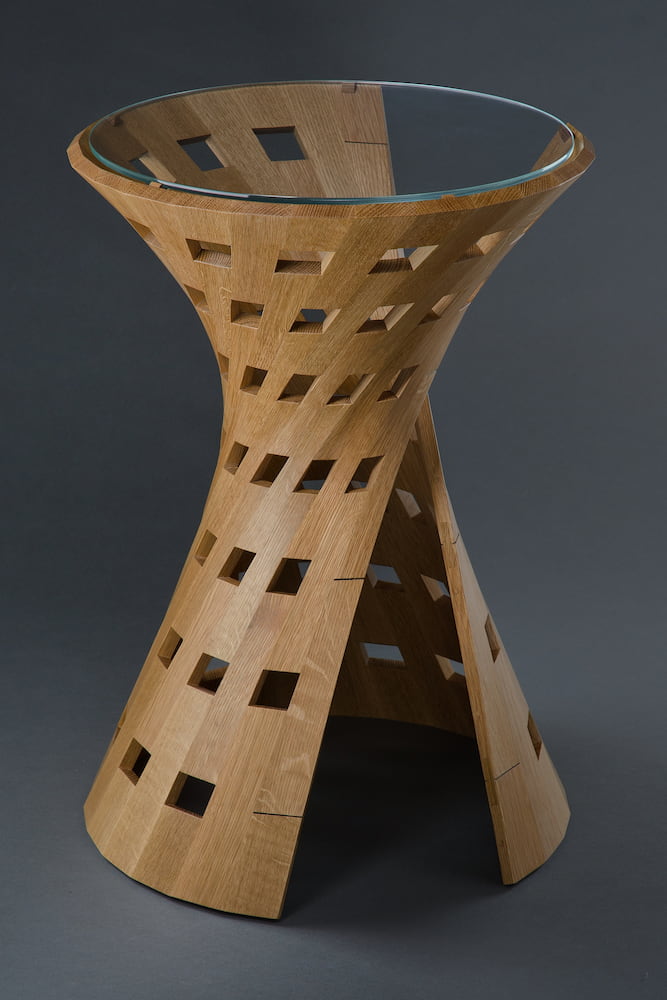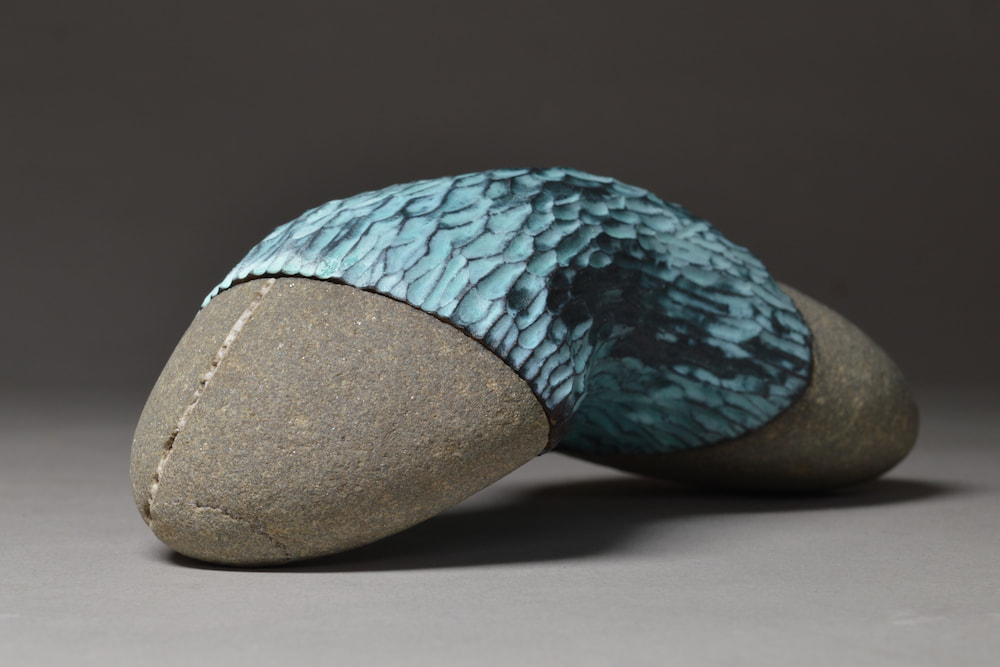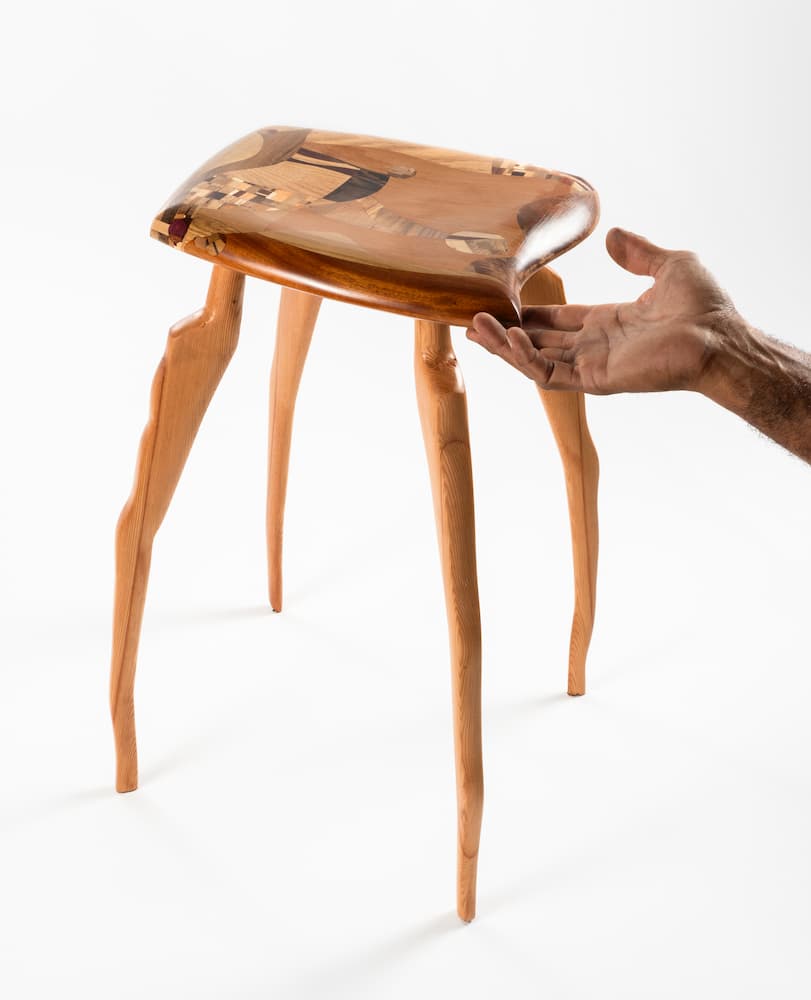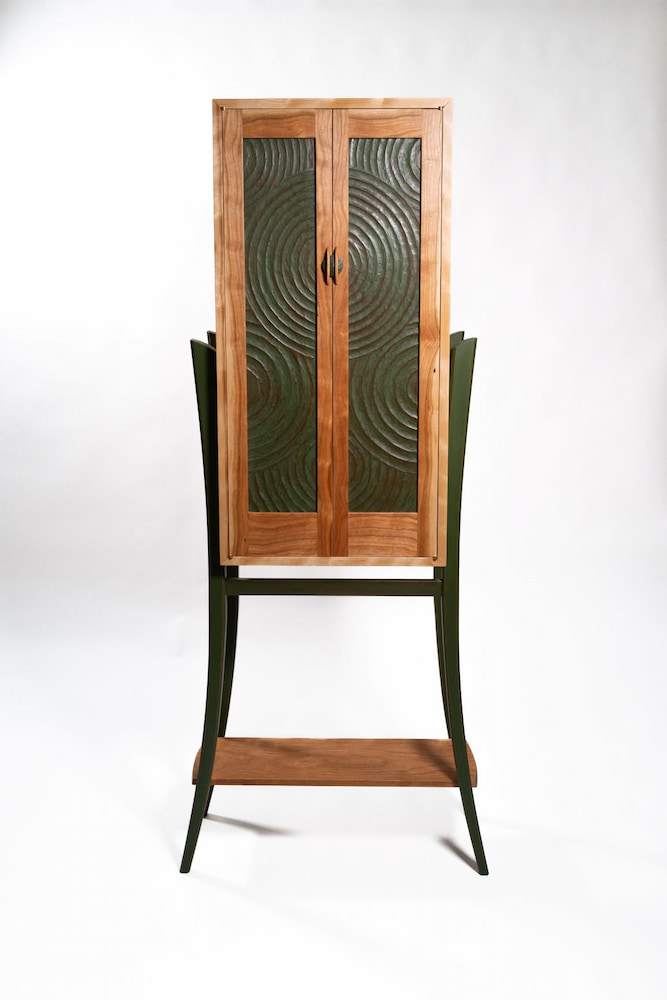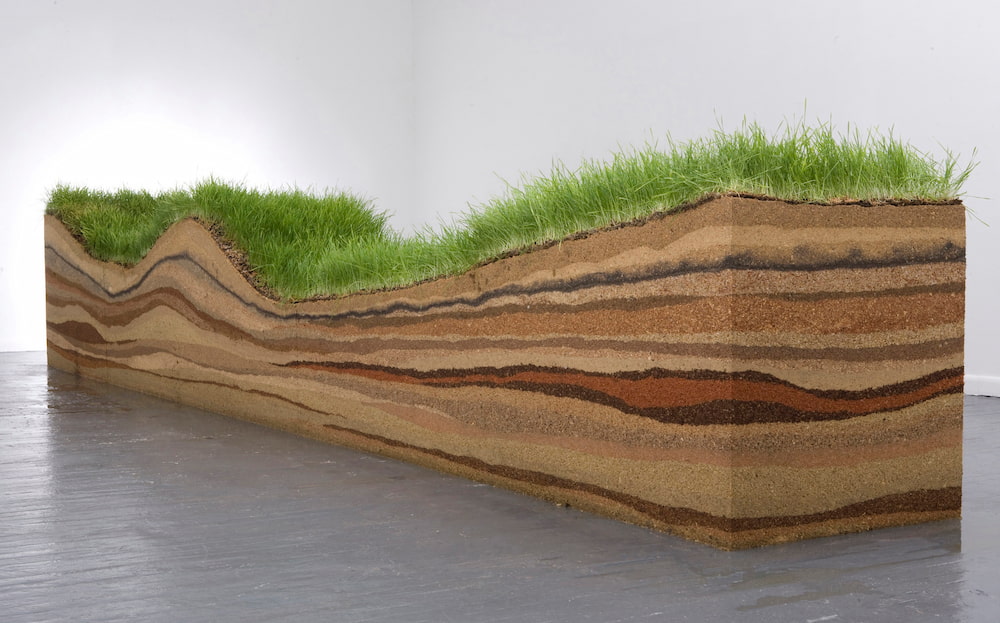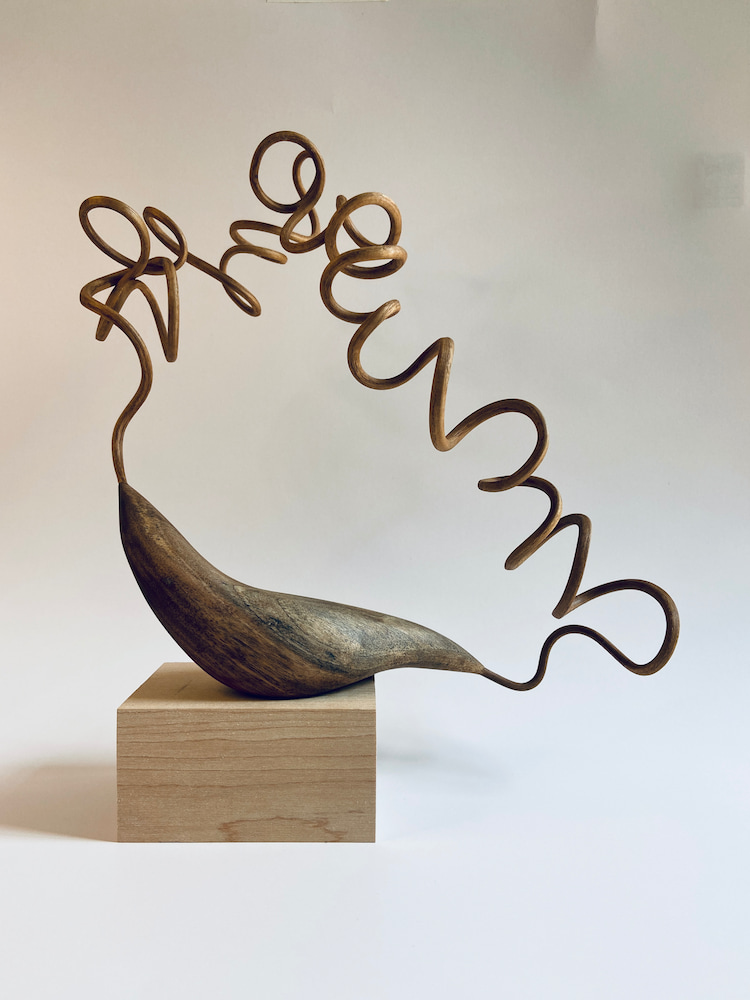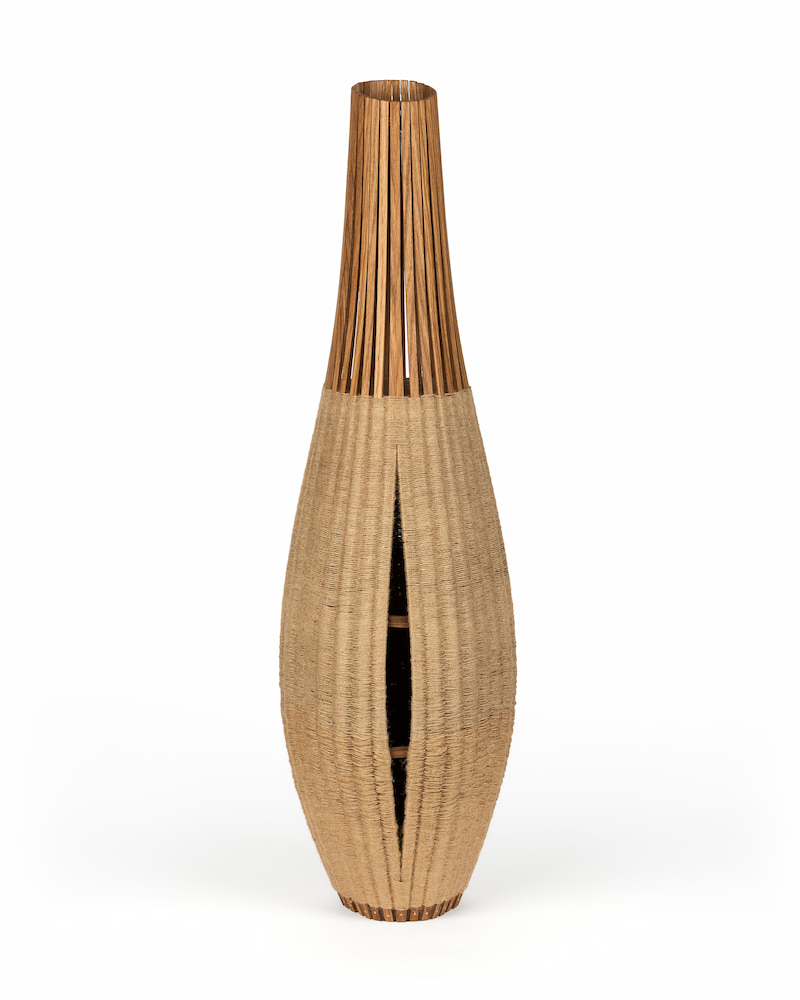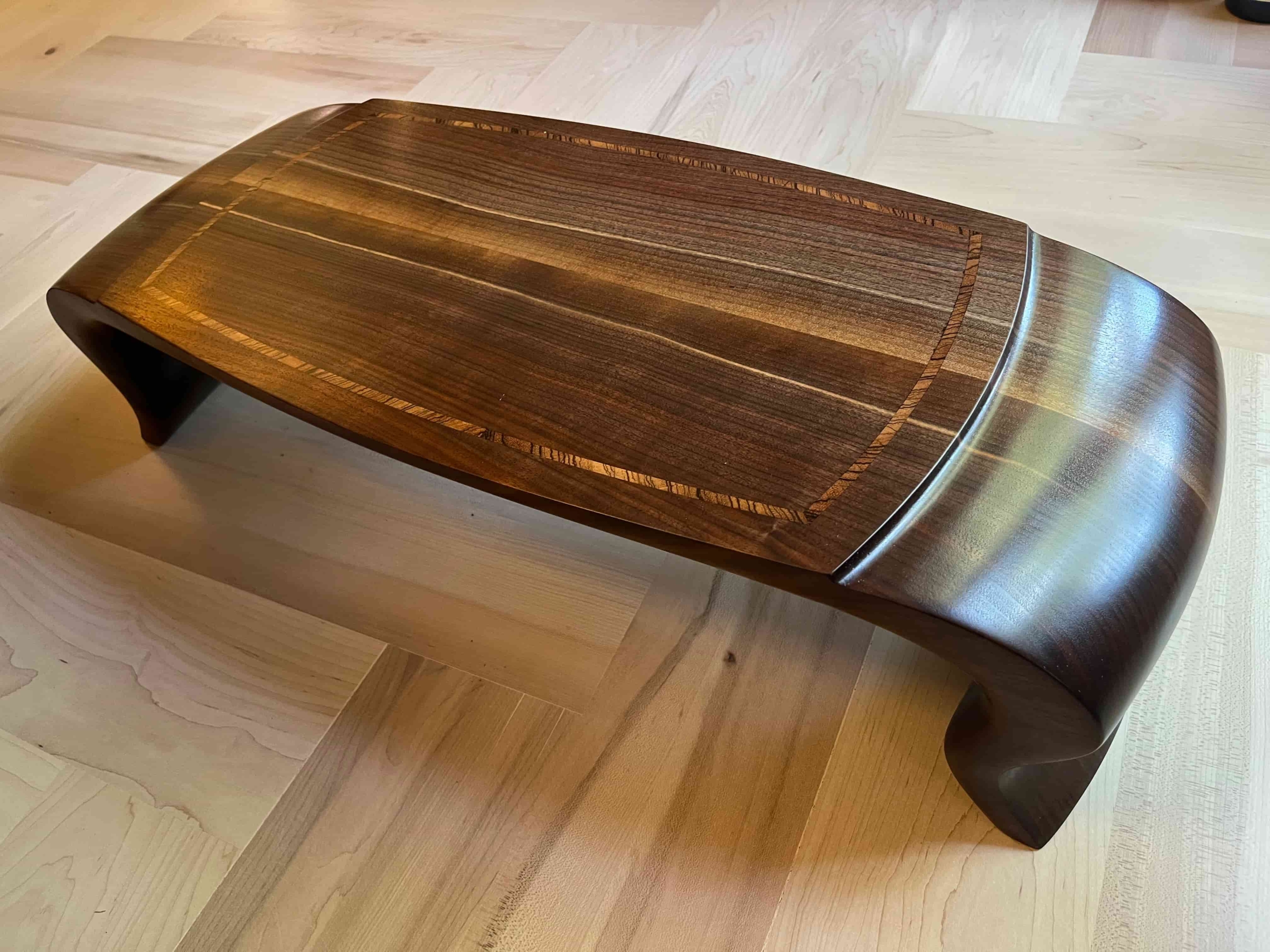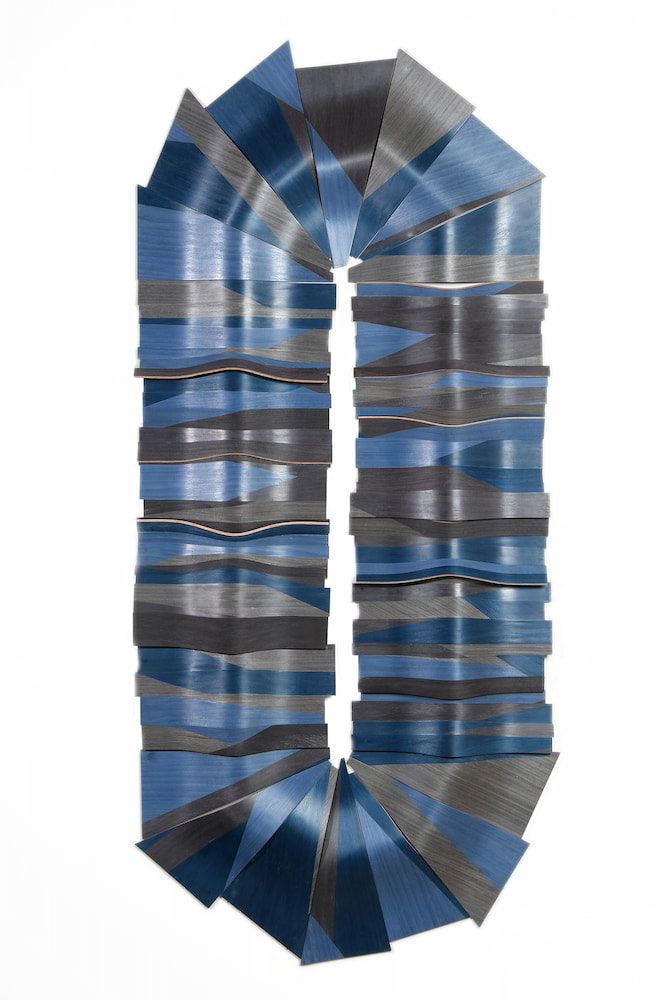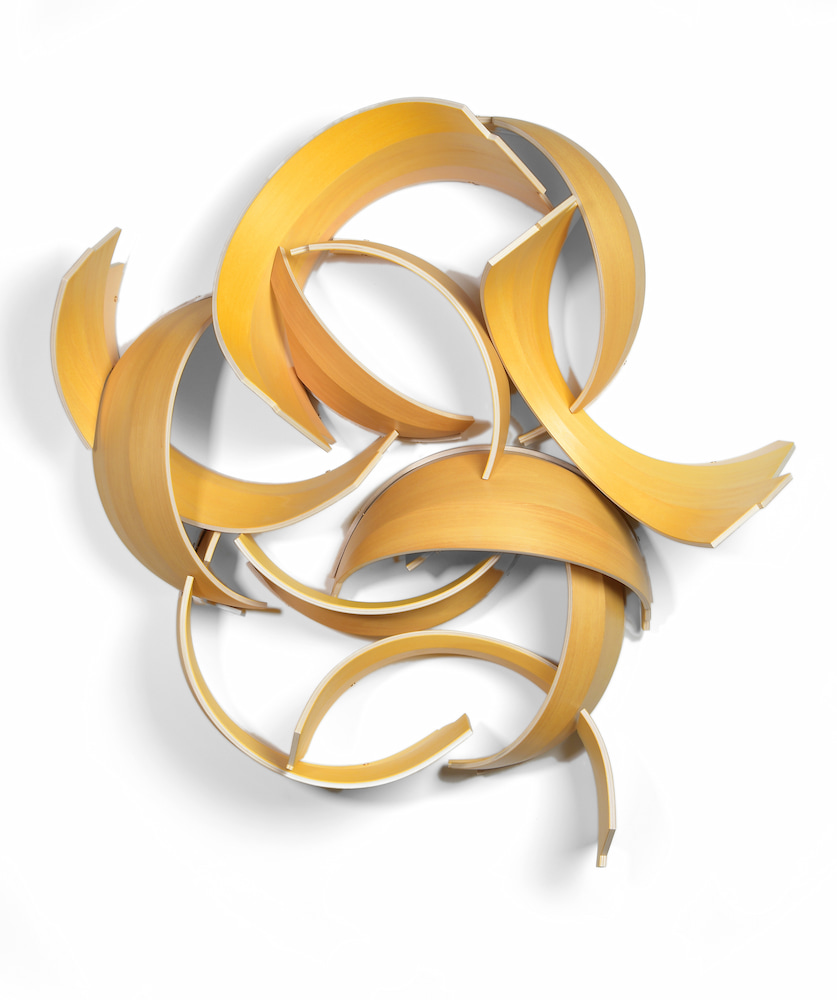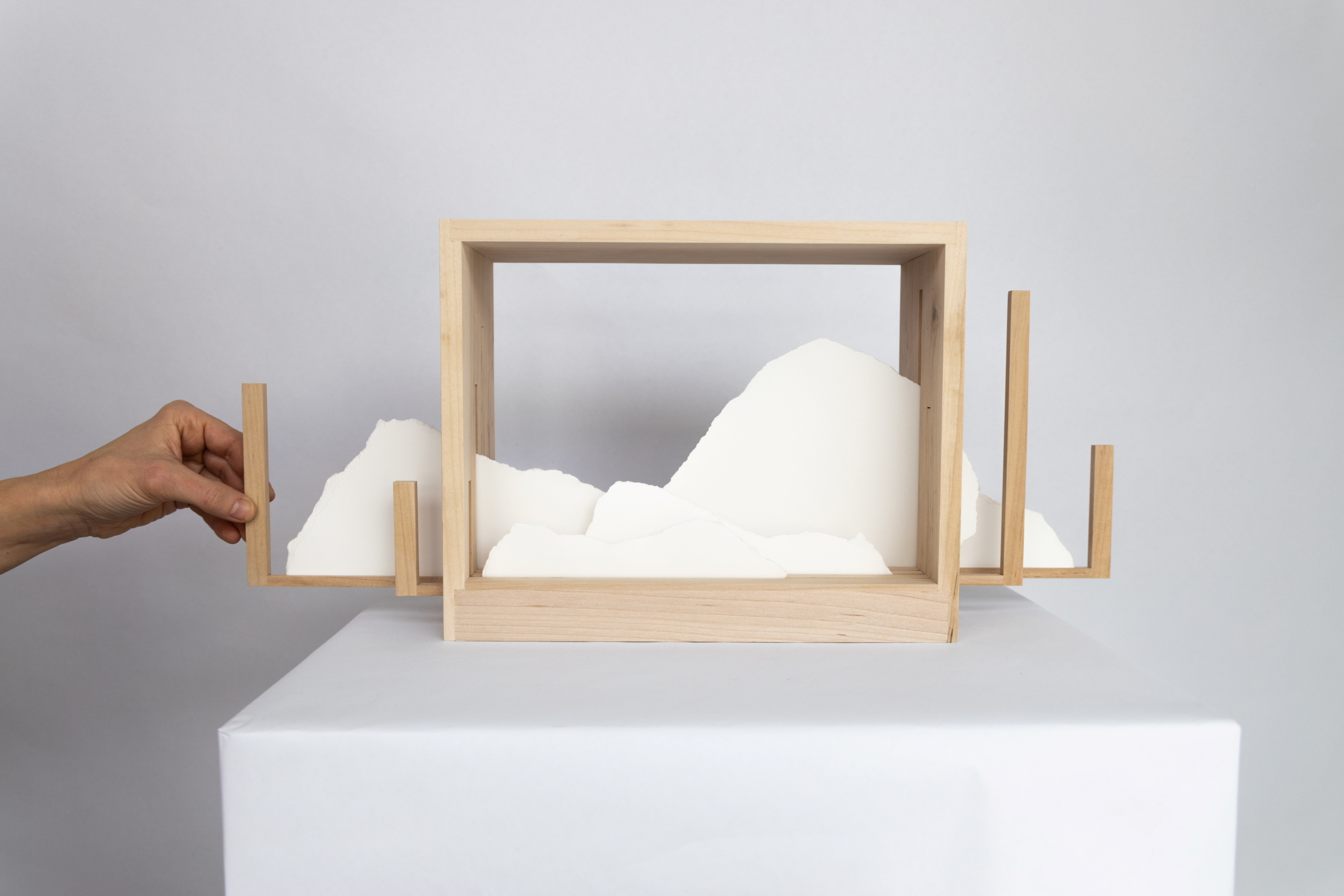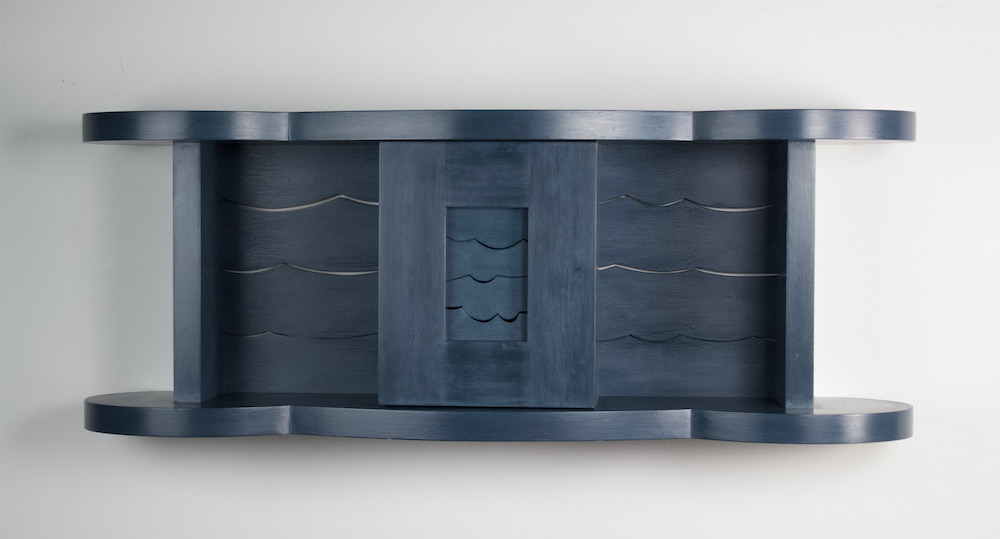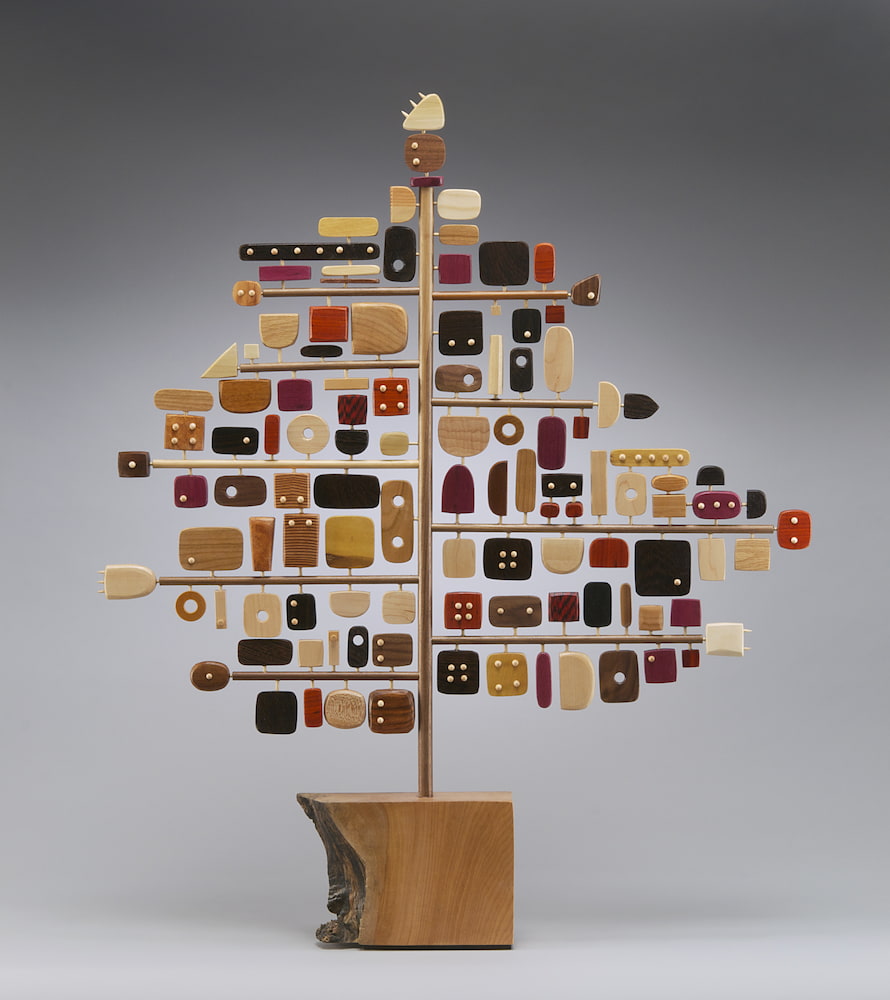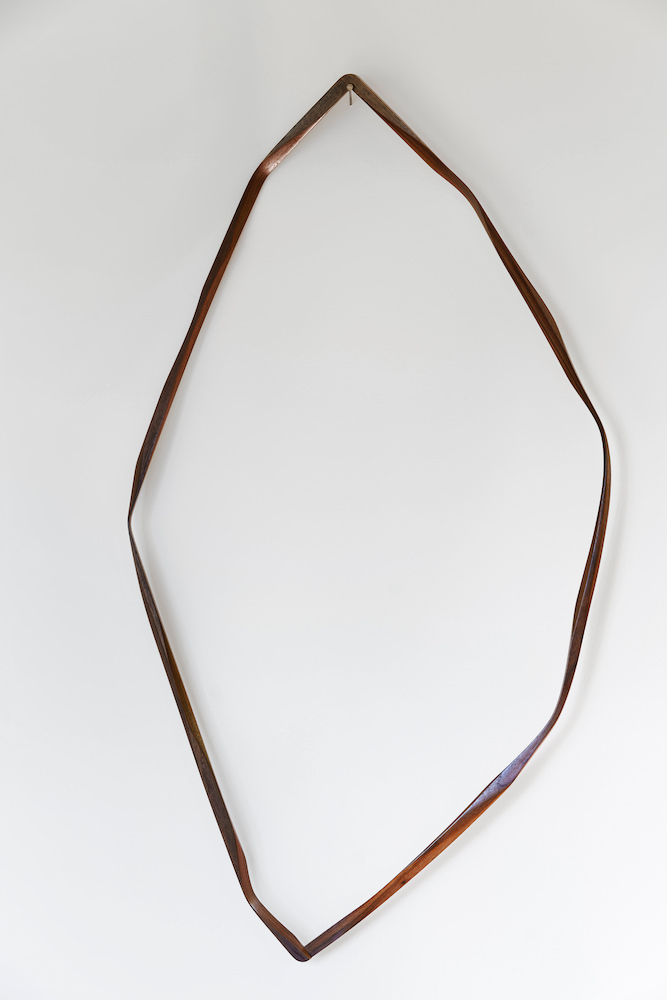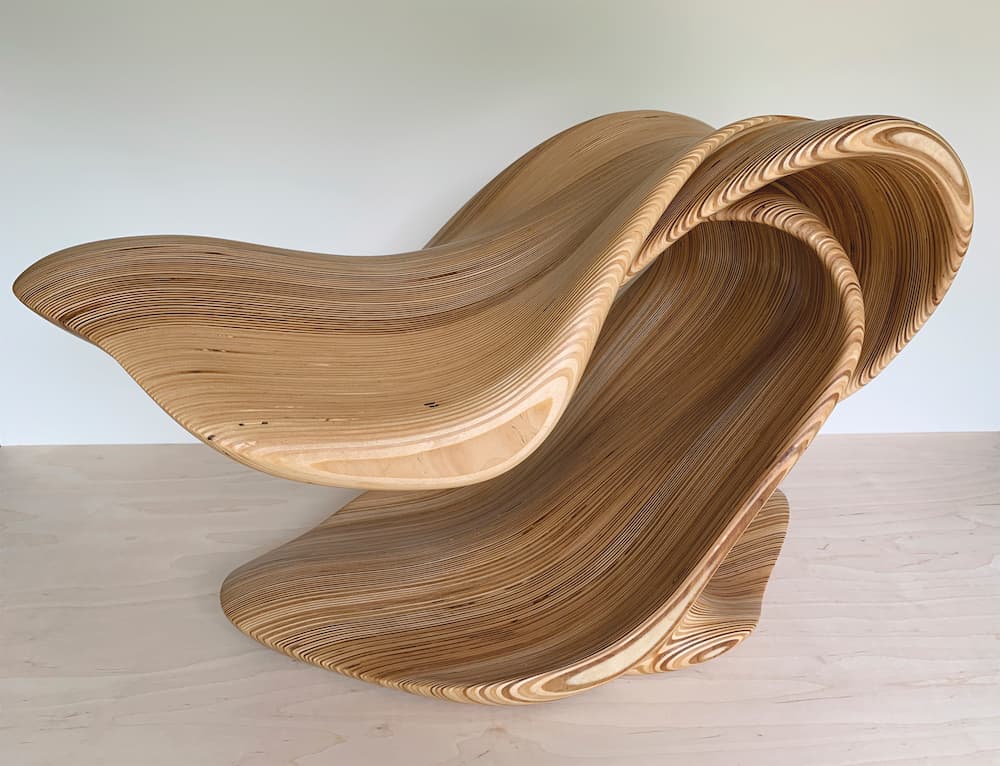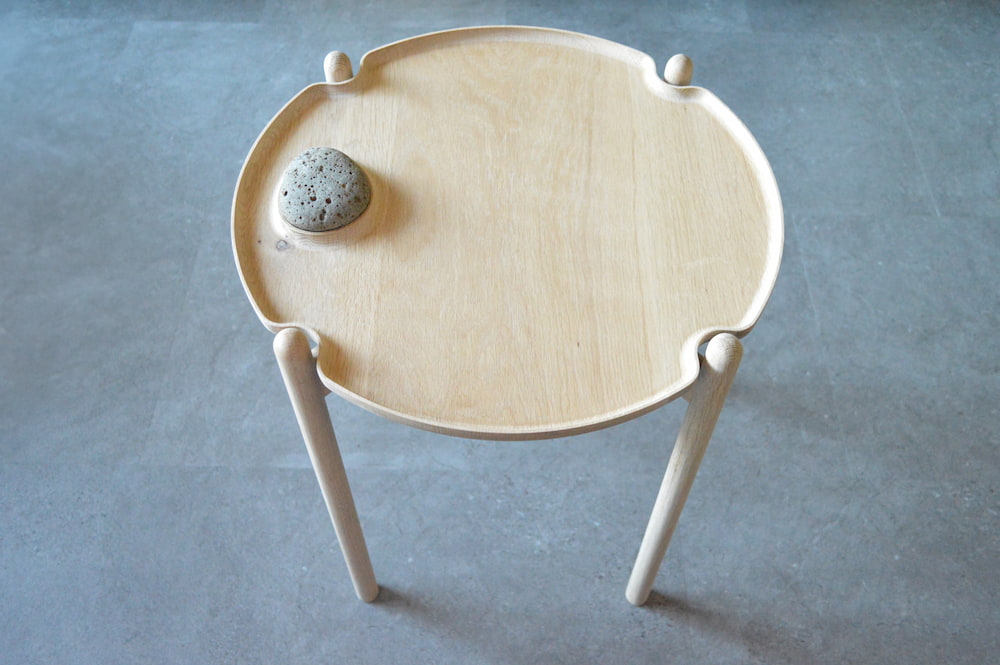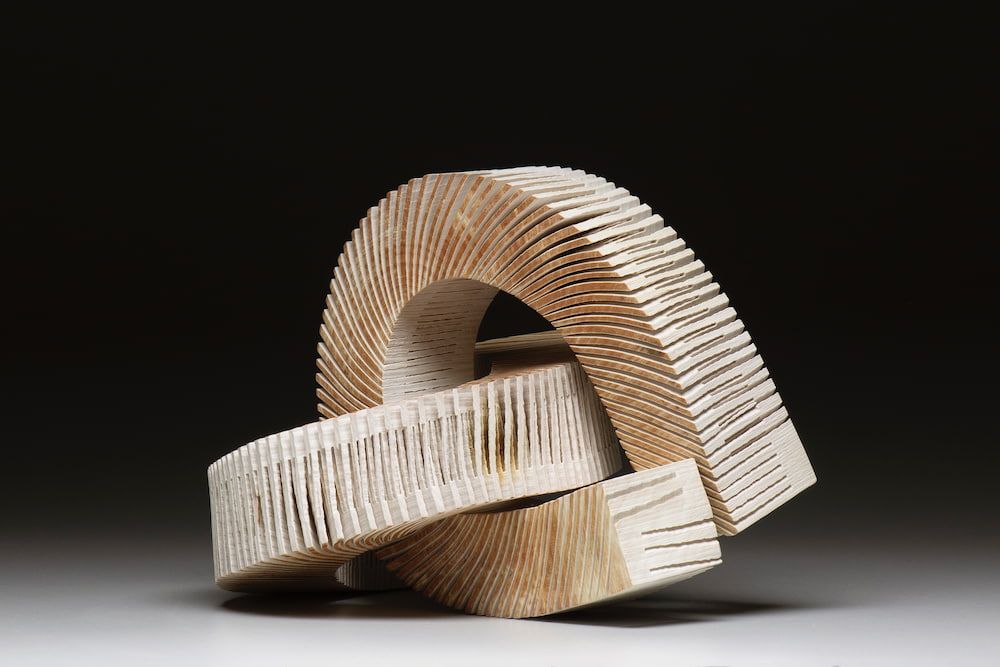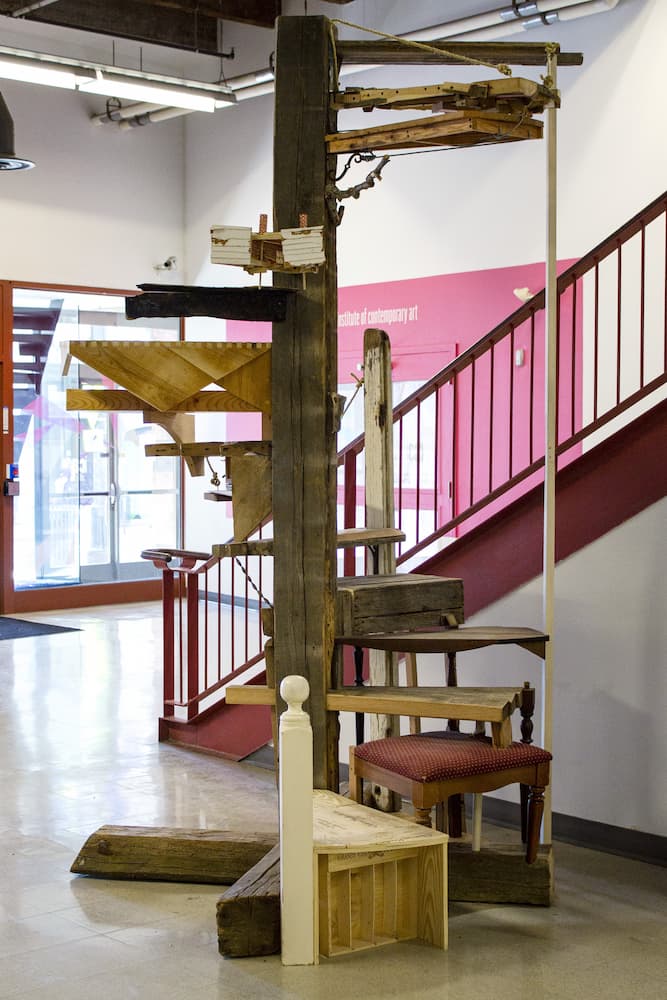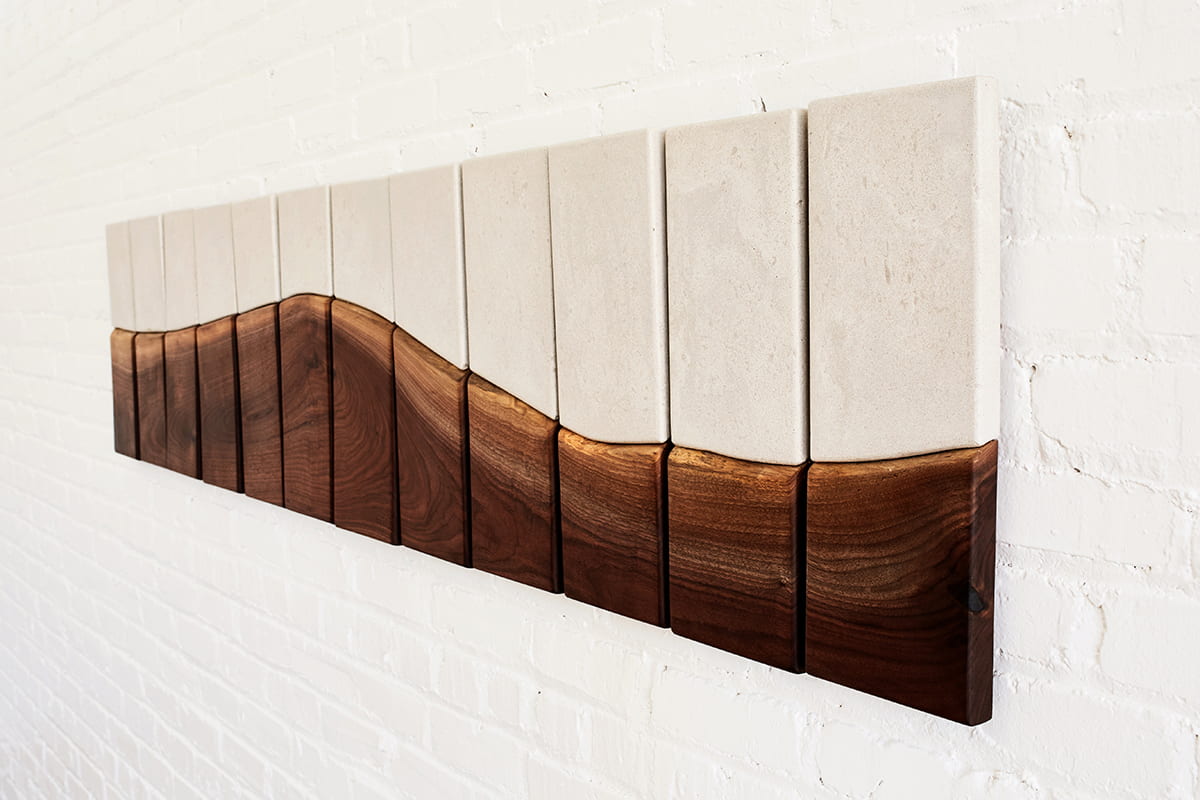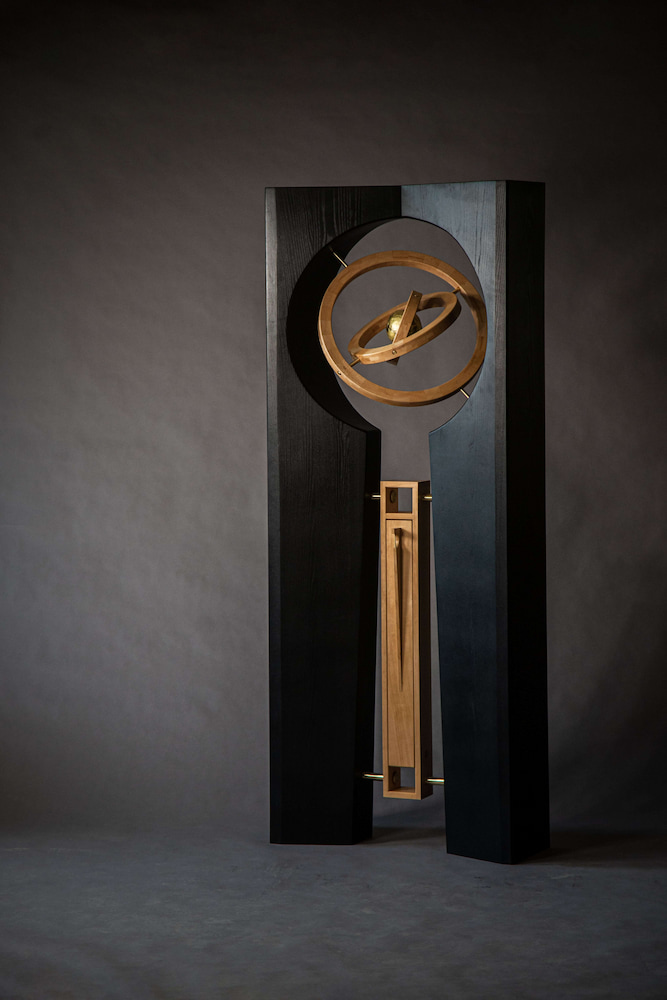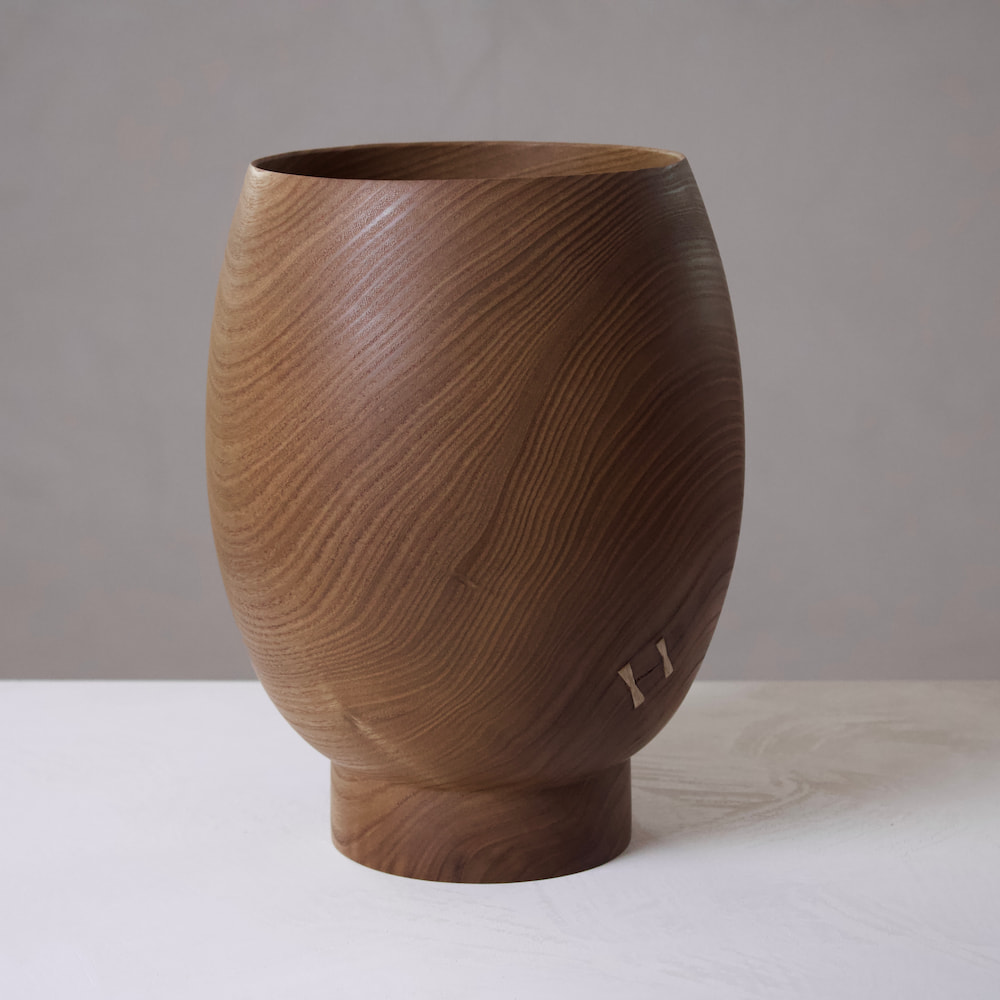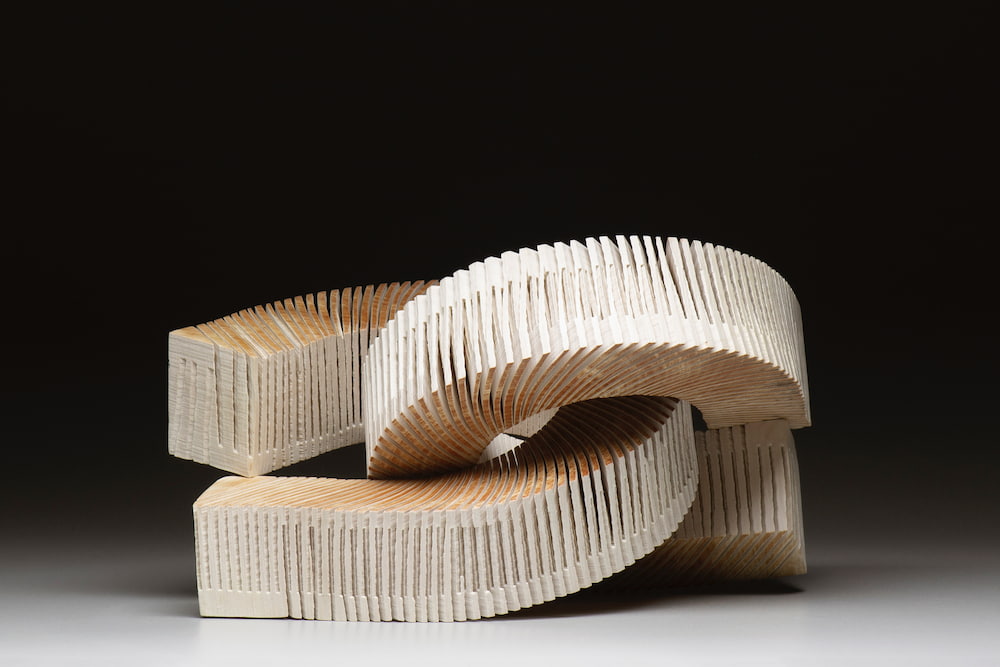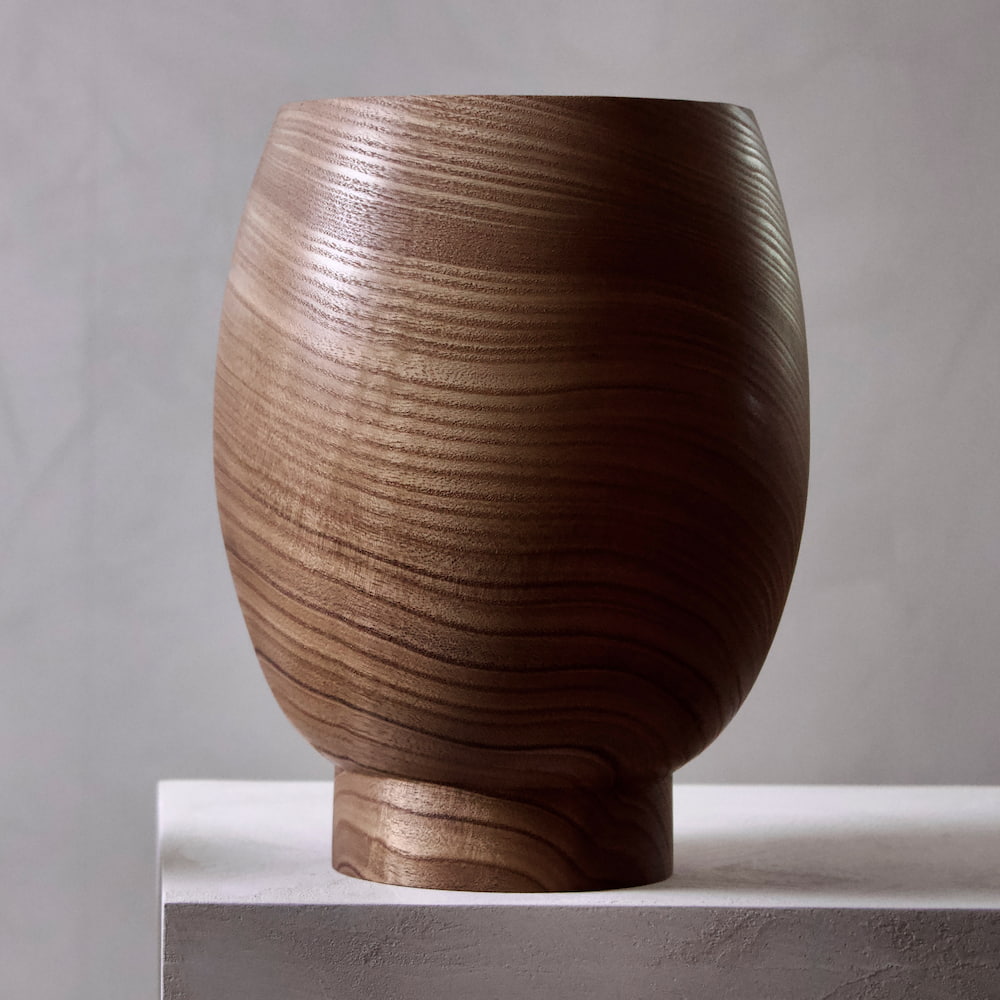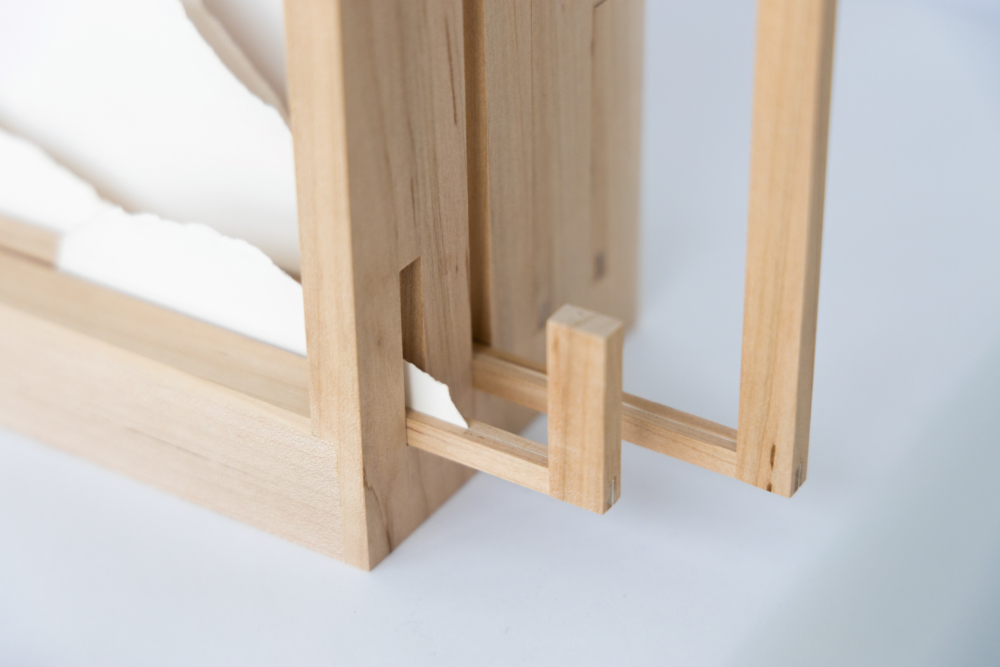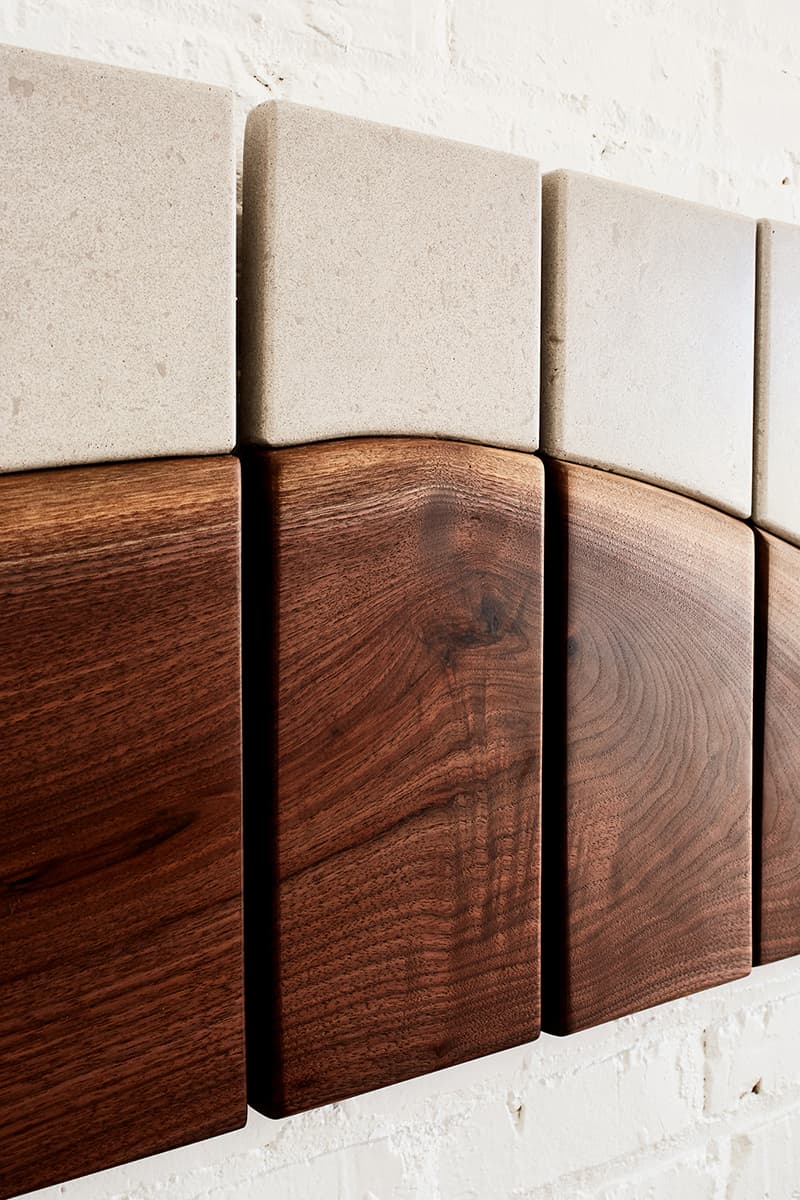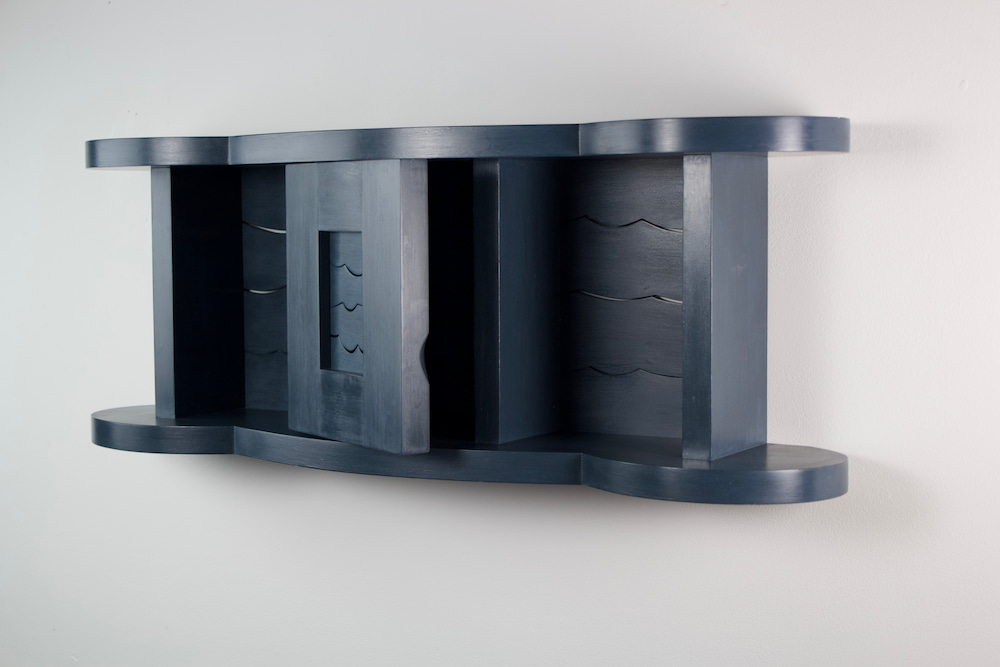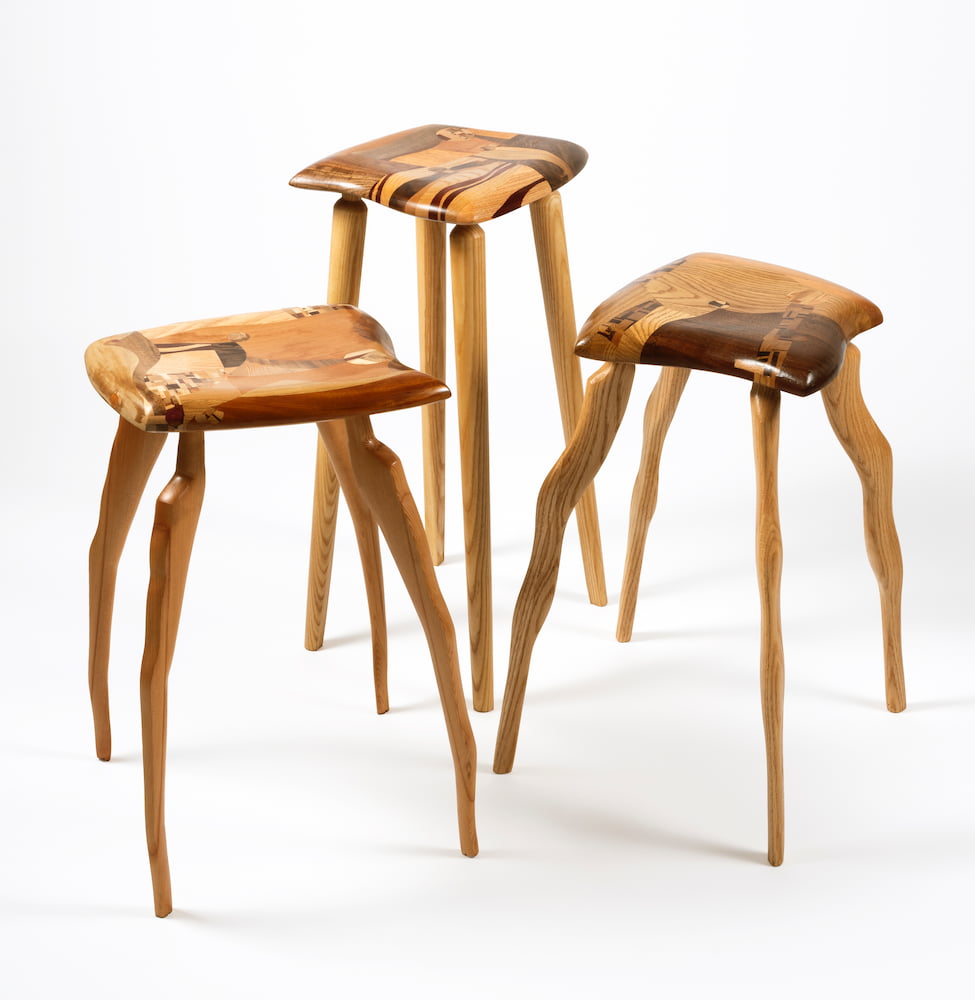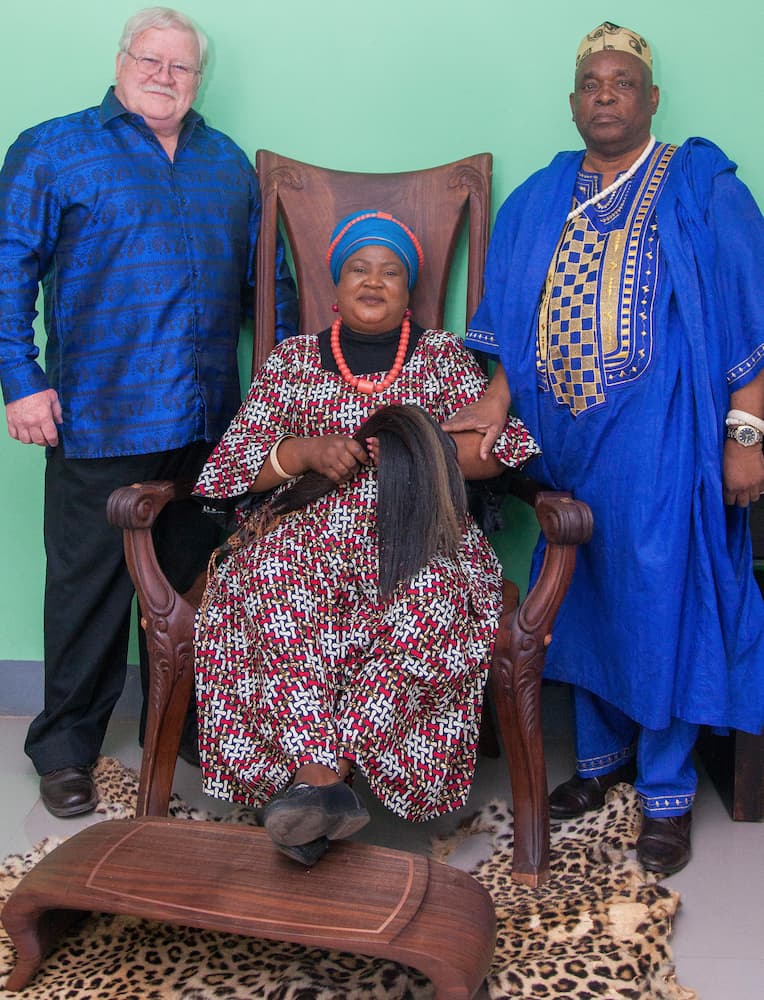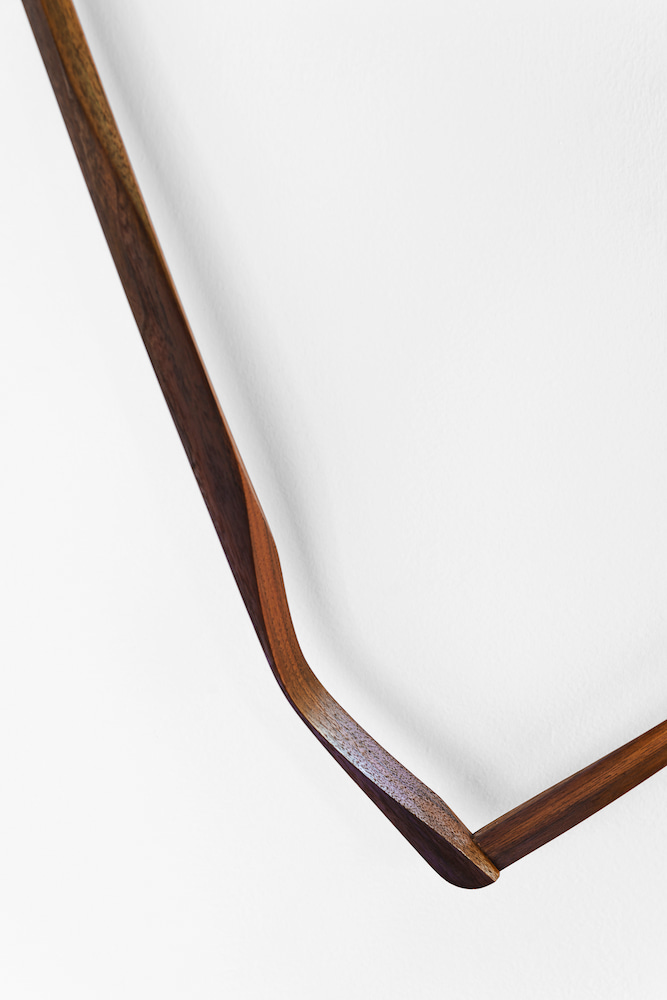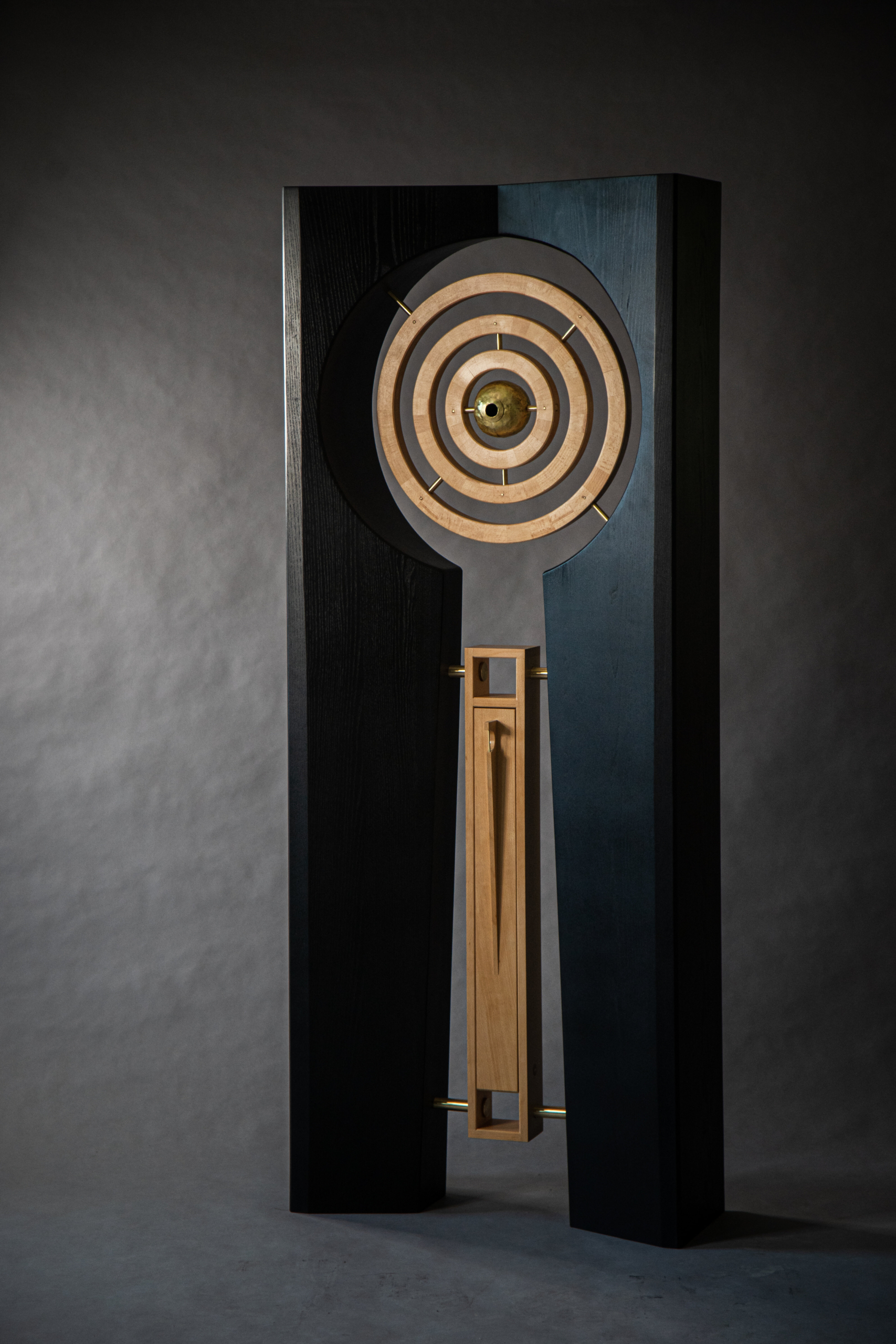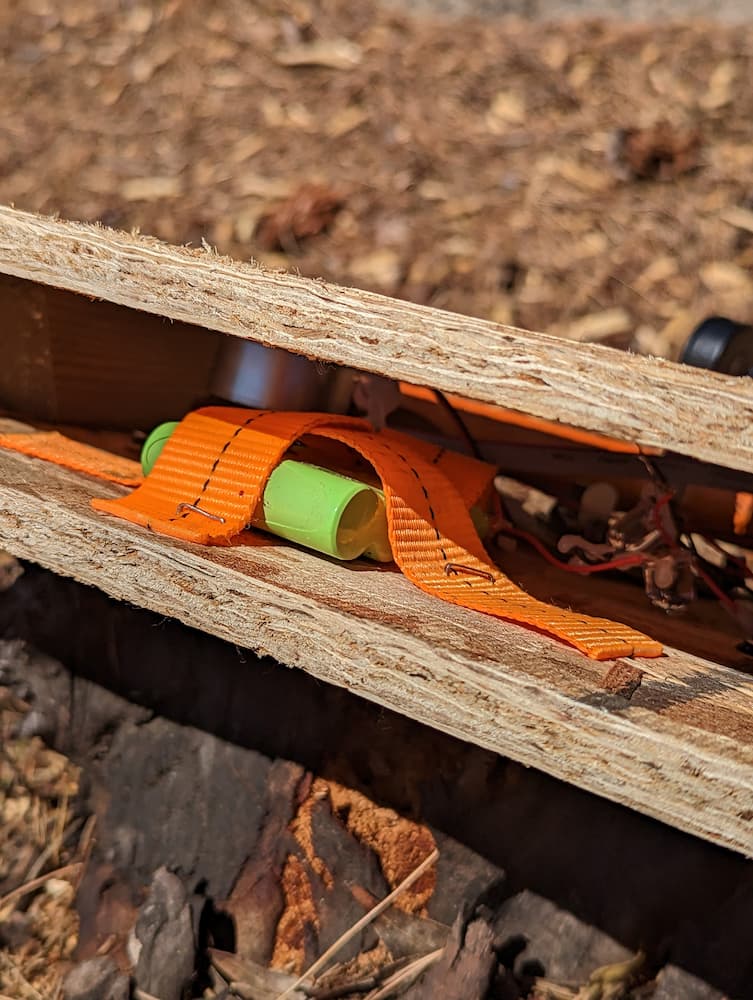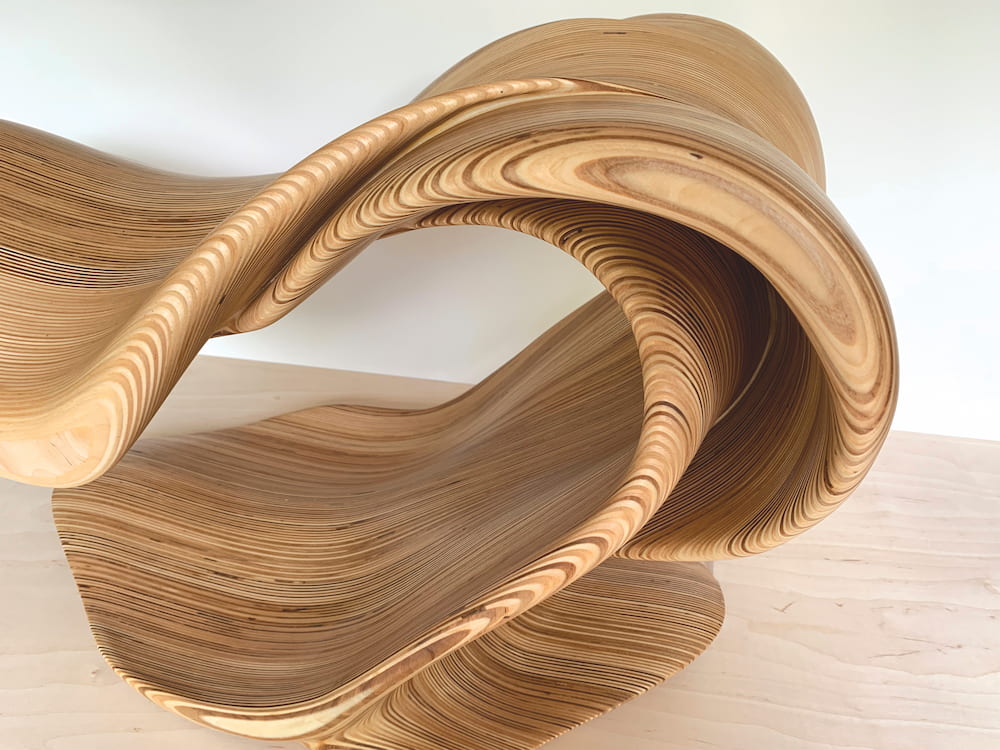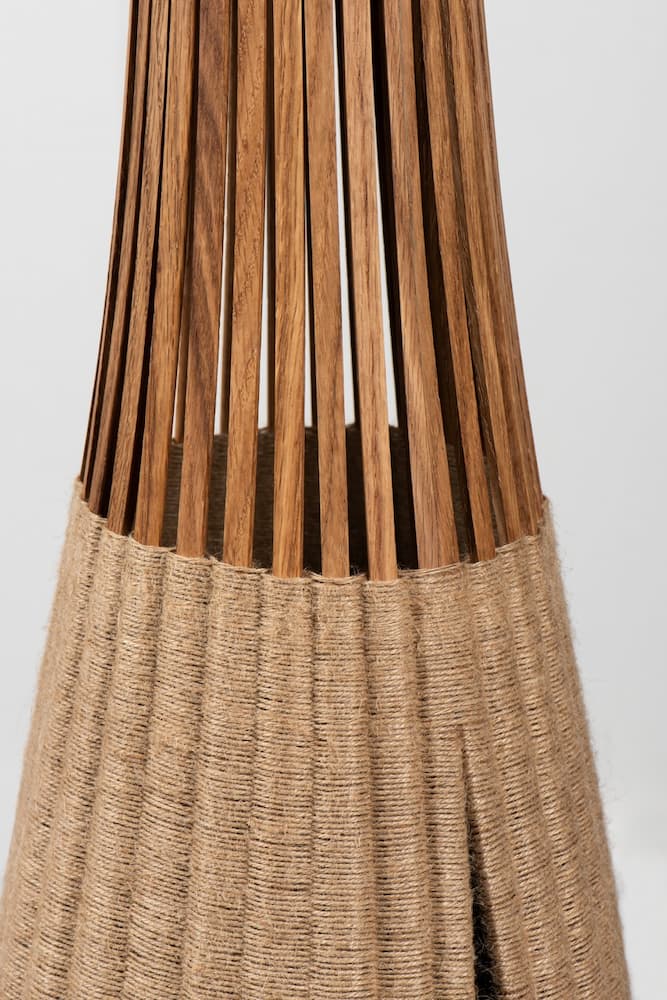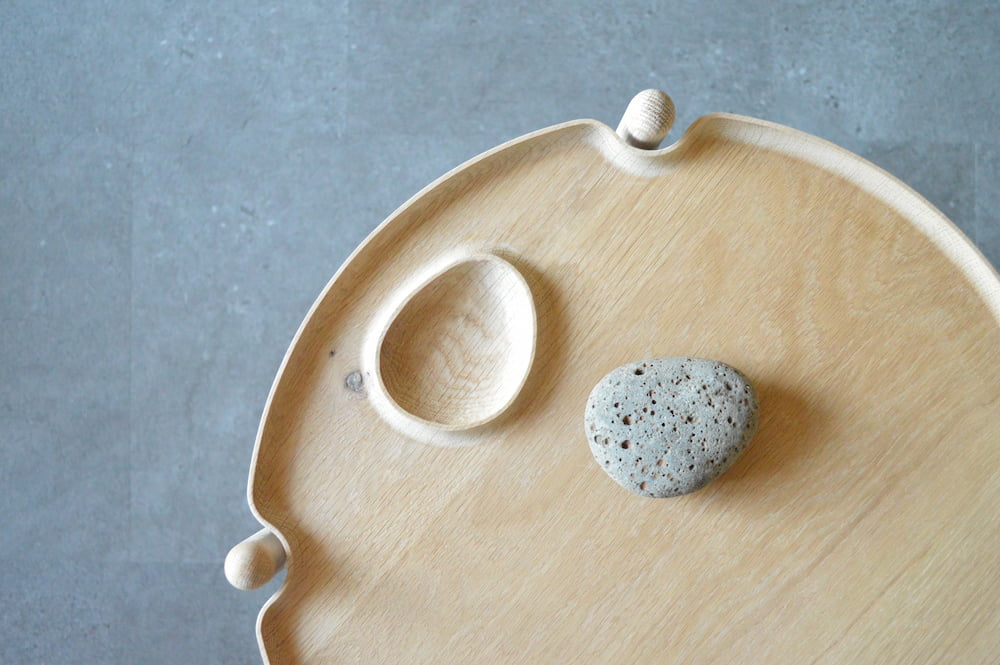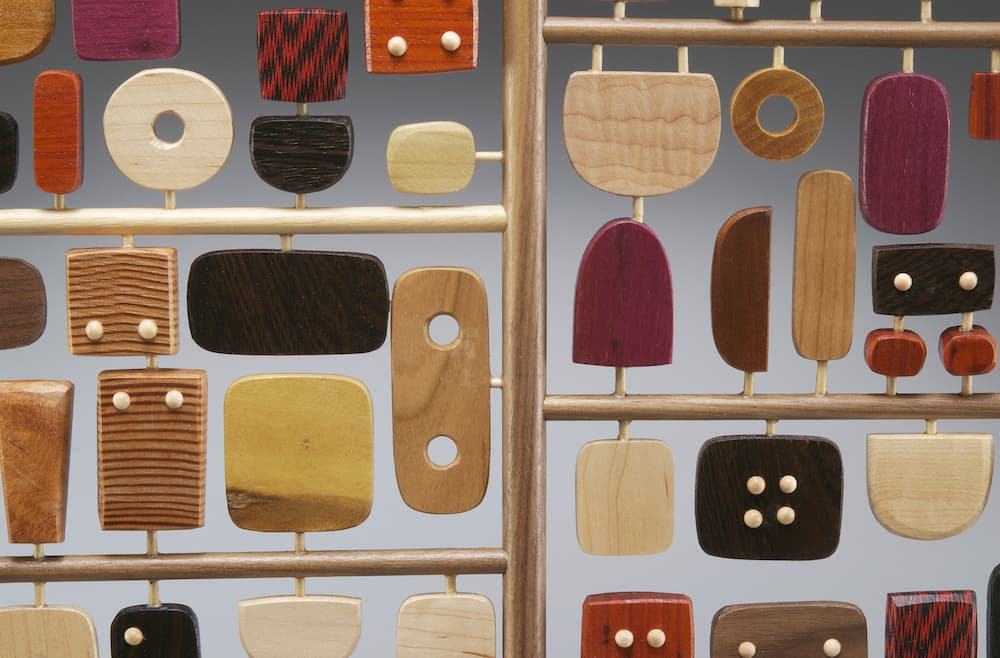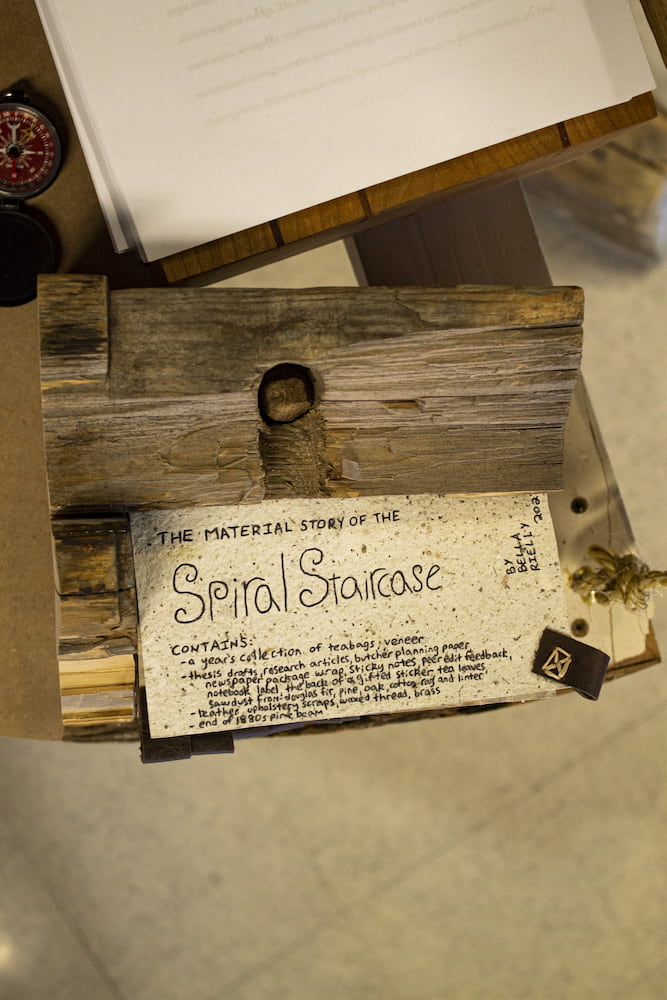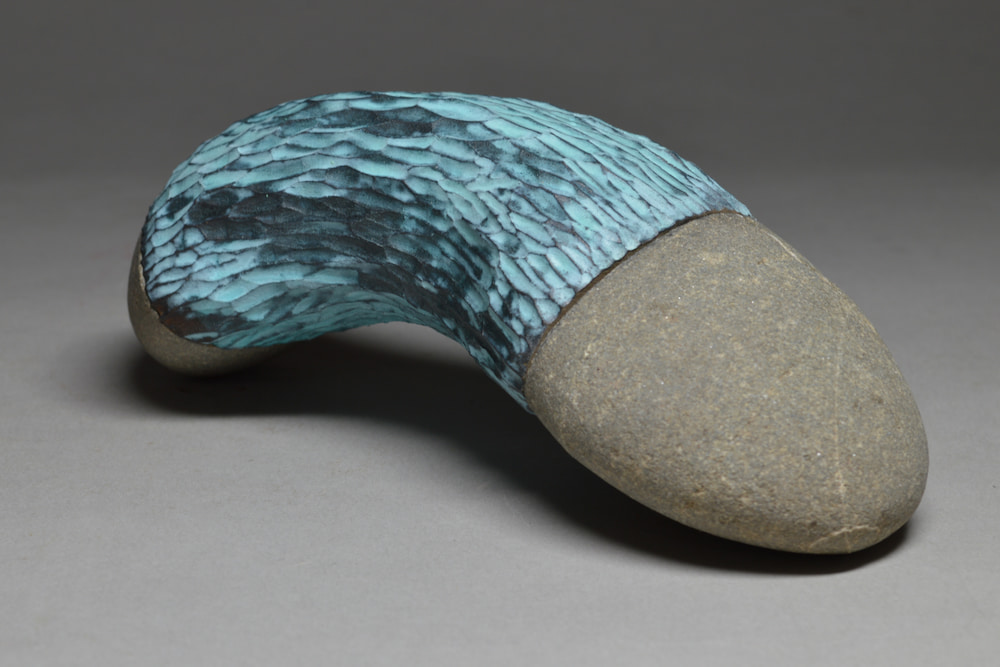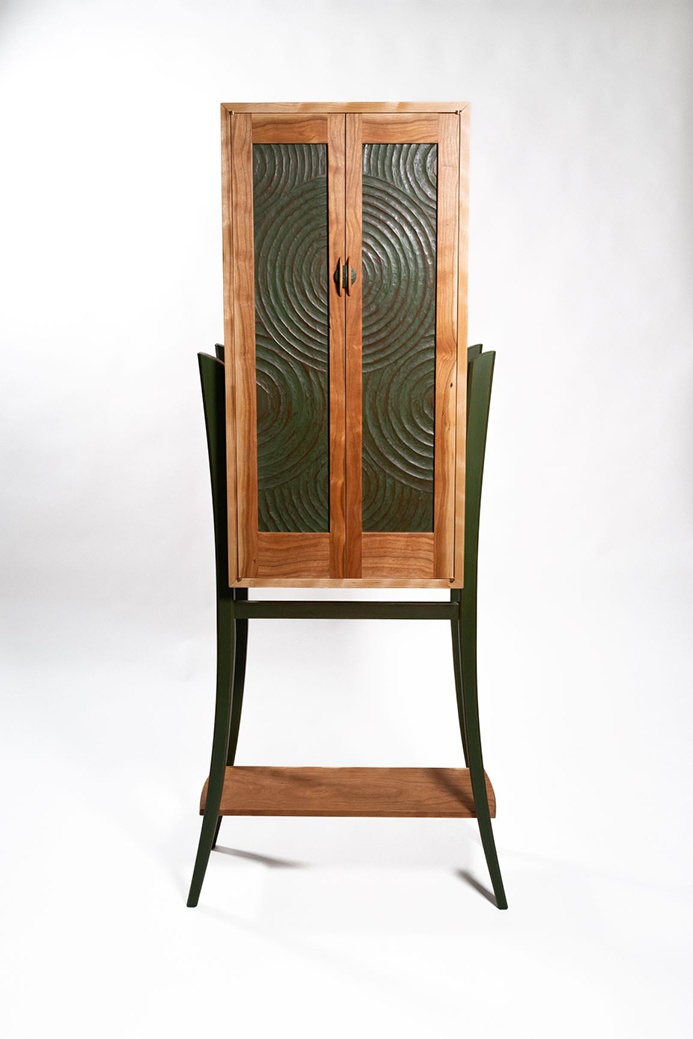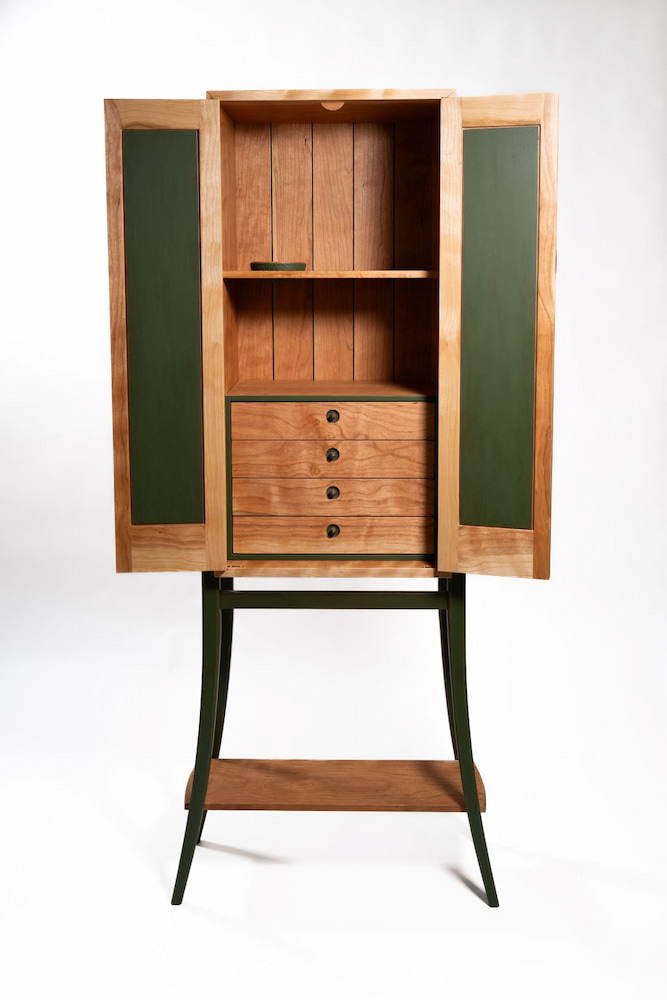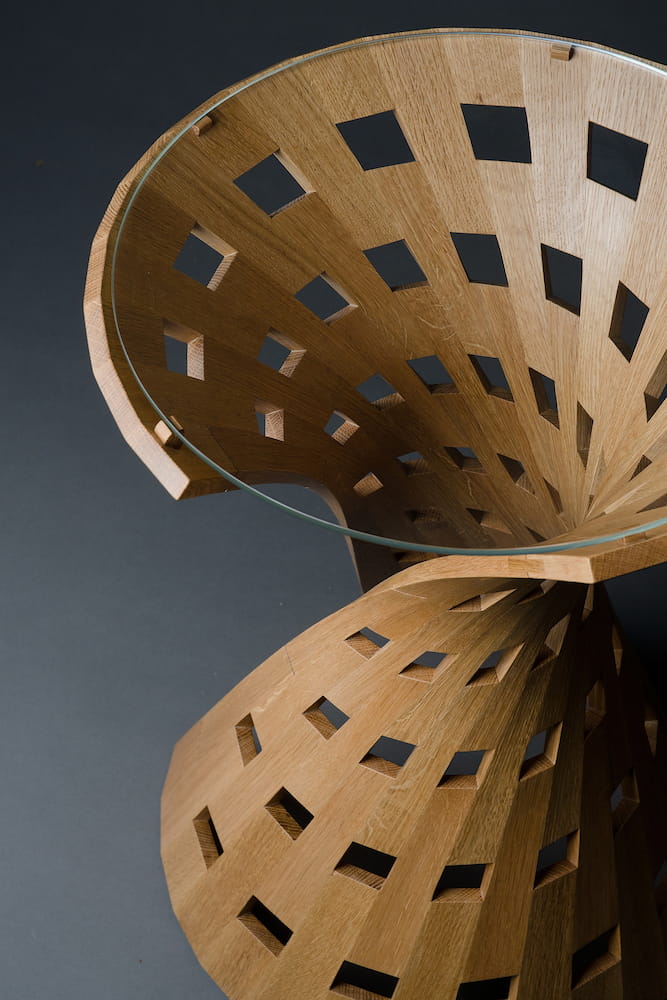Rhythms
30th Annual Juried Woodworking Exhibition
June 13, 2024 – September 8, 2024
Often defined as a strong, regular, repeated pattern of movement or sound, the idea of rhythm has extended across Esherick’s career, taking on multiple meanings. Rhythms, the Wharton Esherick Museum’s 30th Annual Juried Woodworking Exhibition, takes as its inspiration the expansive way that Wharton Esherick integrated the idea of rhythms into every part of his life and work. While the artists featured in this exhibition each think differently about this concept, each skillfully uses Esherick’s chosen medium of wood to invite us into the patterns shaping their own lives and thoughts. All twenty-five artists explore this idea materially and conceptually, offering insight into the cadence of their practice and their creative aspirations. They invite us to ponder the rhythms at play in our own lives, the patterns that shape who we are, and how effectively wood can engage this expansive idea.
This virtual exhibition features the works of all 25 included artists. These works are also available for viewing in a publication which is available as a digital download or in hard copy. The artworks selected for First, Second, and Third place and Honorable Mention will also be on display in the Visitor Center through September 8th. Our Visitor Center is open during our current tour hours (Thurs – Sun 10am – 3pm). Please note, guests wishing to enter the Studio must make advance reservations for a tour.
Many of the works showcased in Rhythms are available for purchase and the WEM store also features new jewelry and home-goods made by artists.
2024 Guest Jurors: Jennifer-Navva Milliken and Kimberly Winkle
We were delighted to have Jennifer-Navva Milliken and Kimberly Winkle as our esteemed guest jurors for this year’s exhibition. Jennifer-Navva Milliken is the Executive Director and Chief Curator of the Museum for Art in Wood and Kimberly Winkle is a maker who creates furniture and objects using wood and paint as well as Professor and Director of the School of Art, Craft & Design at Tennessee Technological University.
First Place: Chelsea Witt
Chelsea Witt, Reaction, 2021. Beech, felt, 48″ x 16 3/4″ x 30″. Photography by Mark Juliana.
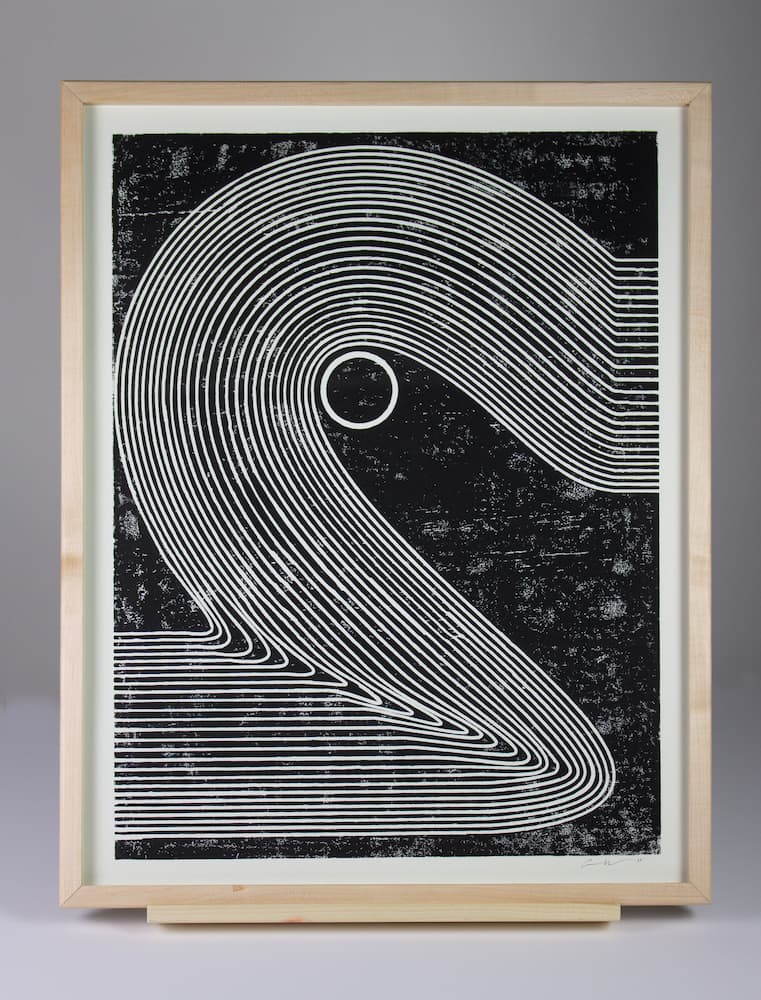
Chelsea Witt, Conflict Can Amplify Love, 2023. Ink, maple, 25″ x 28″.
Conflict Can Amplify Love engages in rhythm both visually and metaphorically. Physically, the line work moves around and in conjunction with the round object, creating a rhythmic pattern. It is unclear whether the object is causing the lines to act around it or if the lines are purposefully engulfing the objects. Metaphorically, the rhythm of emotion and action create a ripple effect surrounding worldly conflict. The viewer is meant to feel the tug of questioning around positivity or negativity. Is the “conflict” maneuvering the love? Or is the “love” reverberating around the “conflict”? The title suggests the latter. Either way, the rhythms of life, reaction and movement are felt here.
Most of my work uses repetition to create movement. On Reaction, a piece of furniture that is utilized for rest, I have created movement to interact with visually. The back of the bench is engraved with repetitive lines that have been transformed by an intruding object. The reflection of this pattern is transposed to the seating area where felt is inlaid and provides comfort for the body. The shelving space beneath the bench is also a repeated pattern of staves mimicking the line work above.
My work is a reflection of my own human experience, driven by the act of repeated patterns and delving into the depths of complex emotional struggles stemmed by internal and external events. I hope to inspire introspection, empathy, and a deeper connection to the differences within the human experience.
Chelsea Witt is a woodworker, illustrator, and educator. Their work utilizes rudimentary shapes to explore the way that simplicity and complexity coexist as a response to internal and external events. Chelsea has a passion for teaching those who would not typically have access to or have been underrepresented in the woodworking field. Chelsea is the Education Chair for the Chair Maker’s Toolbox, as well as a volunteer for the Furniture Society, a Workshop of Our Own, and the Maine Crafts Association.
After graduating from the University of South Florida with a BFA they have worked and taken opportunities up and down the east coast seeking growth in furniture making specifically.
Chelsea has worked for and or studied under makers such as Alexis Dold, Tyler Hays (BDDW), Christina Boy, Aaron Fedarko, and David Upfill-Brown. They have attended courses at Penland School of Crafts in North Carolina and The Center for Furniture Craftsmanship. Chelsea’s teaching experience includes: the Center for Furniture Craftsmanship (ME), Penland (NC), Peters Valley (NJ), Pocosin (NC), Port Townsend (WA), Haystack (ME). Currently Chelsea is teaching age 10-18 year olds in New Jersey and spends the summers in Mid-Coast Maine teaching and focusing on their personal practice.
Second Place: Raul De Lara
Raul De Lara, Tornado, 2020. Cedar, walnut, pine, leather, 17-year-old Tennessee Walking Horse hair, lacquer, acrylic, steel, 21 1/2″ x 9 1/2″ x 21 1/2″. (left)
Raul De Lara, The Wait (Again), 2022. Walnut, cedar, hemu, lacquer, color pencil, urethane, pigment, 21″ x 19″ x 20 1/2″. (right)
I study the rhythm of cacti spikes and use them poetically in my work to describe emotions such as pain and grief. The Wait (Again) is about the sometimes painful seasons of life that one can only sit and wait out. Tornado was made to commemorate the passing of my friend’s horse named Tornado. This piece is my way of continuing the rhythm of life as one body transforms from one thing when it dies to another in its afterlife. The piece was made using the hair from Tornado’s tail.
Raul De Lara is a sculptor based in New York City. De Lara’s practice is rooted in storytelling via woodworking. He immigrated from Mexico to the United States at the age of 12, and has been a DACA recipient since 2012. Growing up in Texas as a non-English speaker, and still currently unable to leave the USA, his work questions ideas around nationality, queer identity, and the immigrant experience. Exploring forms inspired by flora, mask makers, furniture design and architecture, De Lara imbues his sculptures with a hybrid mixture of Mexican/American cultural references, and functions. His research preserves, honors and propels forward traditional uses of wood while combining them with new developments in the global industry of woodworking. De Lara received his MFA in Sculpture + Extended Media from Virginia Commonwealth University (2019), and a BFA in Studio Art from the University of Texas at Austin (2015).
Third Place: George Lorio
George Lorio, Discontinued, 2022. Found bark attached to constructed wooden armature, 18 1/2″ x 18 1/2″ x 5 1/2″.
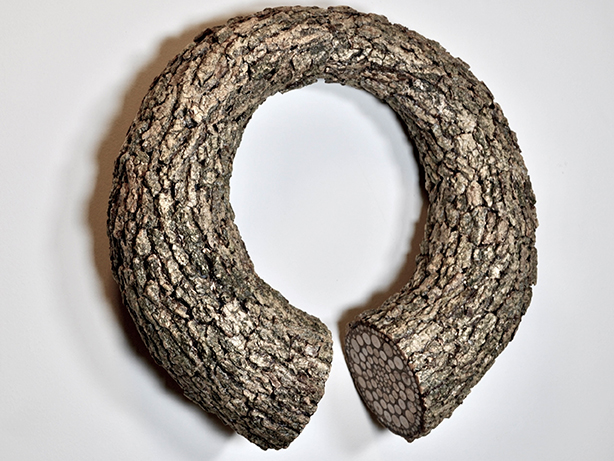
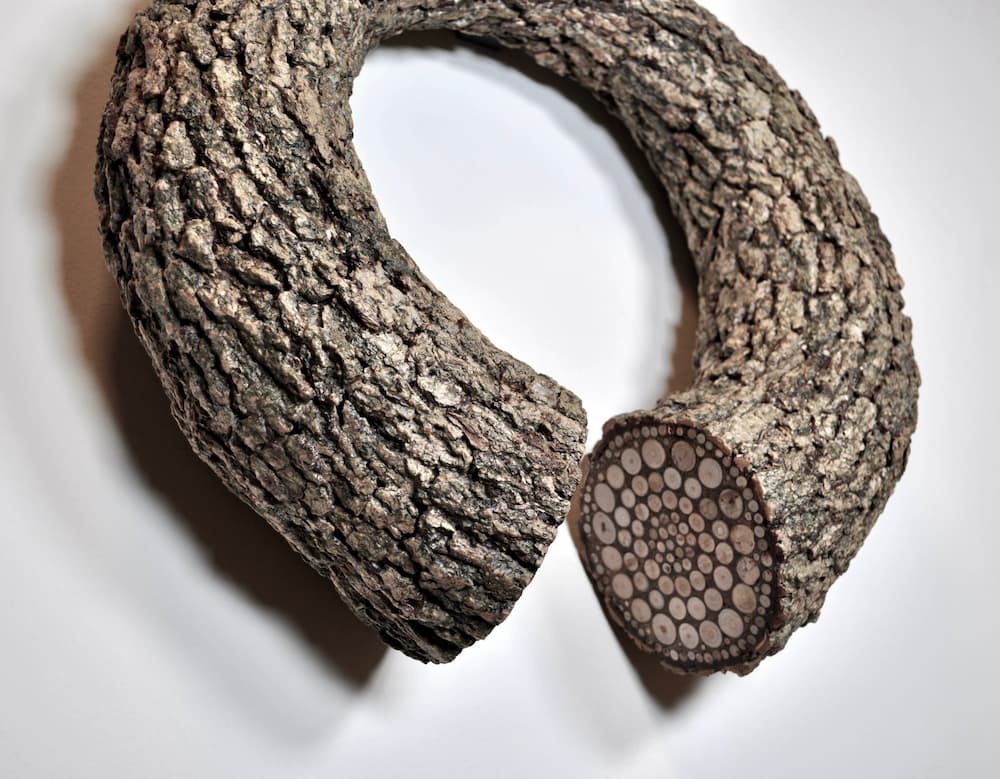
These constructions are fictitious renderings of trees, stumps, and logs. They appear abstracted, altered to pair with other modules to offer the viewer a vision of decay and rebirth on the forest floor: the rhythm of life in the forest. Pattern activates the surface of the forms with cut found twigs or bark alluding to the activity of photosynthesis when sunlight is turned into energy. When I create sculptures suggesting a living tree with forest floor detritus, it is a form of incantation — a poetic activity. An antidote to the industrial development that cares more for removing trees, laying asphalt, and erecting concrete buildings than allowing space for a seed to sprout.
I use a narrative of social concern to engage dialogue. My sculptures convey my comments on ecological destruction and renewal; they present the value of nature’s provision of trees as they are the source for human shelter, oxygen, and avian refuge. My present sculptures arouse concern with visual prods into the contemporary urgency of forest desolation. Nature’s resource of trees is the source for oxygen, air pollution mitigation, carbon capture, limitation of soil erosion and city cooling via the arboreal canopy. These are by-products of photosynthesis: climate restoration through the normal life cycle of trees.
I was born and raised, through my teenaged years, in New Orleans. It framed my vision of life. It was and continues to be a place of extremes: beauty and decay, religion and ritual, custom and iconoclasm. From that experience, I acquired an excitement for visual matters: colors, forms and even artifacts. Having lived on the border with Mexico for ten years changed my view of contemporary culture and our collective social responsibility. At the time of the “9/11” bombing of the Twin Towers, NYC, my sojourn as a professor at the University of Texas in Brownsville on the Mexican border altered my aesthetic. Viewing the ambient drug wars, the desperation of immigrants, and the collapsing Mexican democracy due to endemic political corruption and perceiving the curious lack of commitment for dialogue to offer solutions for the growing racial division, wealth inequality, and environmental decline in my own nation, I changed my insular focus of my art to embrace more topical issues.
Honorable Mention: Talia Drury
Talia Drury, The Sound of Nature, 2022. Cherry, maple, birch plywood, milk paint, shellac, 12″ x 2 1/4″ x 31 1/2″.
The Sound of Nature both depicts and contains the memories of my time spent at Haystack Mountain School of Crafts in the summer of 2022 and the many little intricacies, such as the growing ghost pipe flowers, that I found on the walks I took while I was there in the woods. A consistency of both my work and my health is being able to walk within nature. I take the time frequently to experience the woods near my apartment and am always pleasantly surprised that even on a path that I walk frequently and know like the back of my hand, I’ll find something new. These feelings were the same when it came to experiencing the beautiful woods up in Deer Isle. I frequently went out for little excursions and night walks when I wasn’t busy carving or shaping. This guitar is a physical memory of the space, has a melodic tone fitting of its shape and design and is the epitome of my rhythm of working with wood.
From an early age, I was exposed to the natural world through my grandparent’s wooded property and was able to explore the space freely and learn its history. I create hand carved and shaped natural objects that can be used as a way of reinterpreting and highlighting the beauty and surprises found in the quieter moments outside. My work is an invitation to the viewer to take a walk with me as I explore my experiences in nature and accentuate the details that are so often overlooked on the journey.
I grew up in the midwest and moved only an hour away from family for my undergraduate degree. I pursued my undergraduate degree at Iowa State University in Industrial Design with minors in both Business and Design Studies. I am currently pursuing a MFA from Rochester Institute of Technology in Furniture Design. I find much of my inspiration from small, handheld objects, and I build pieces relating formally to these collected objects, as well as holding the objects I have found.
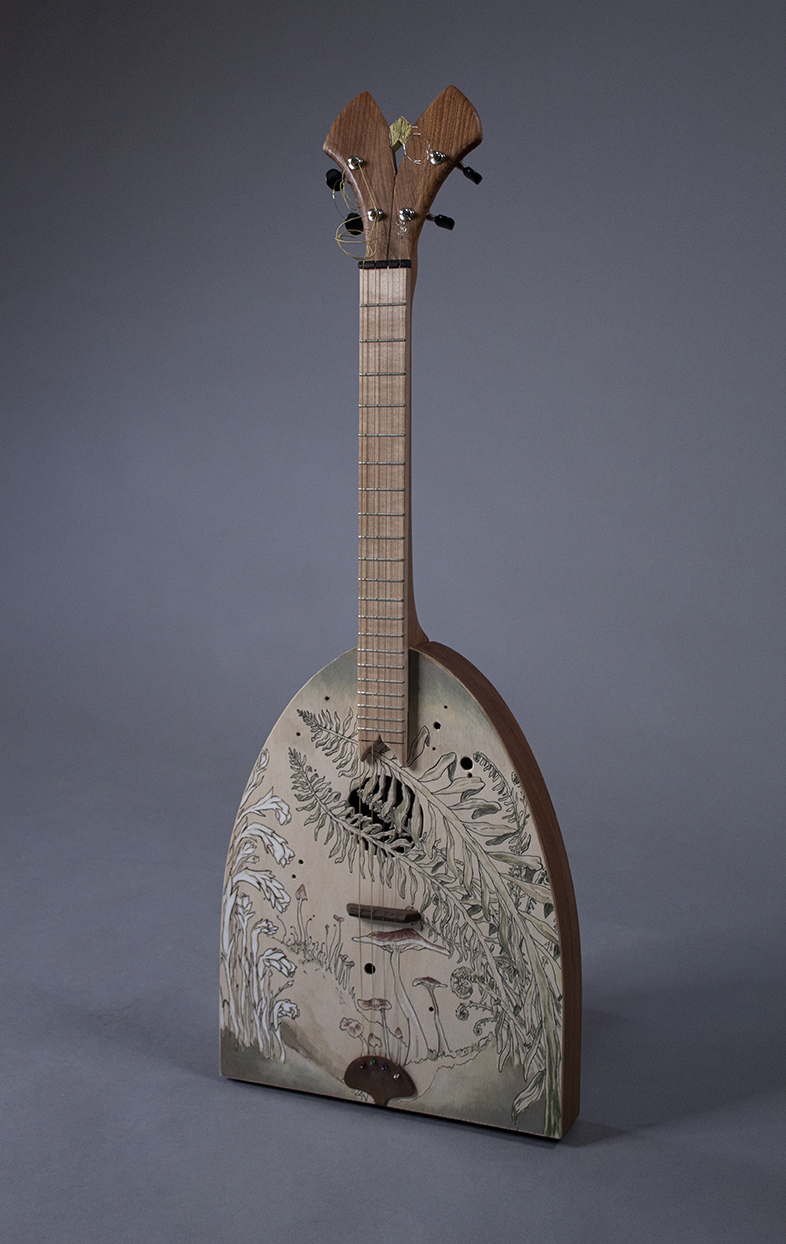
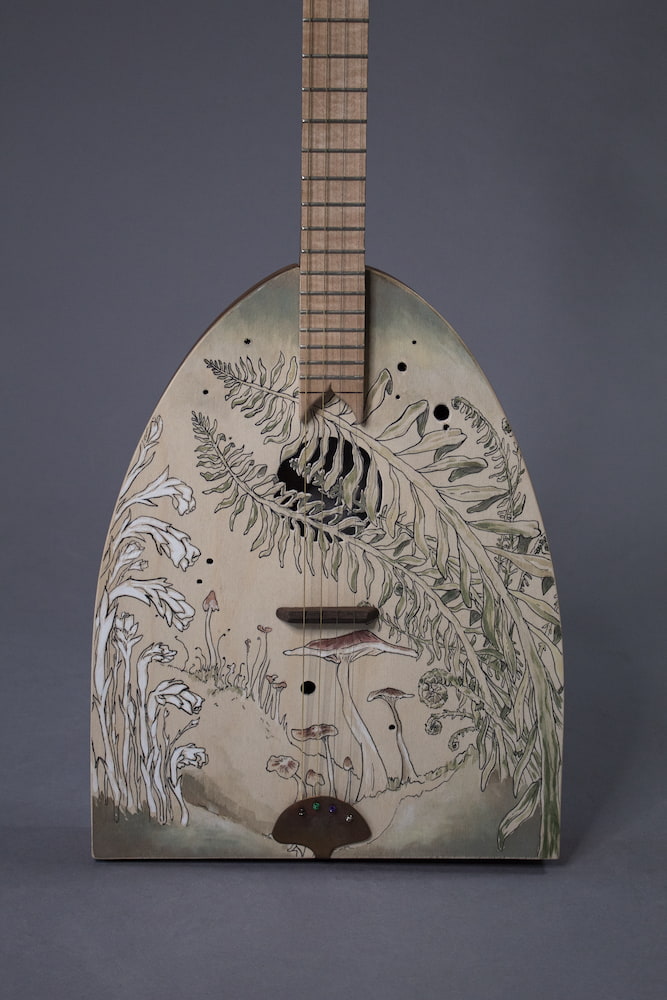
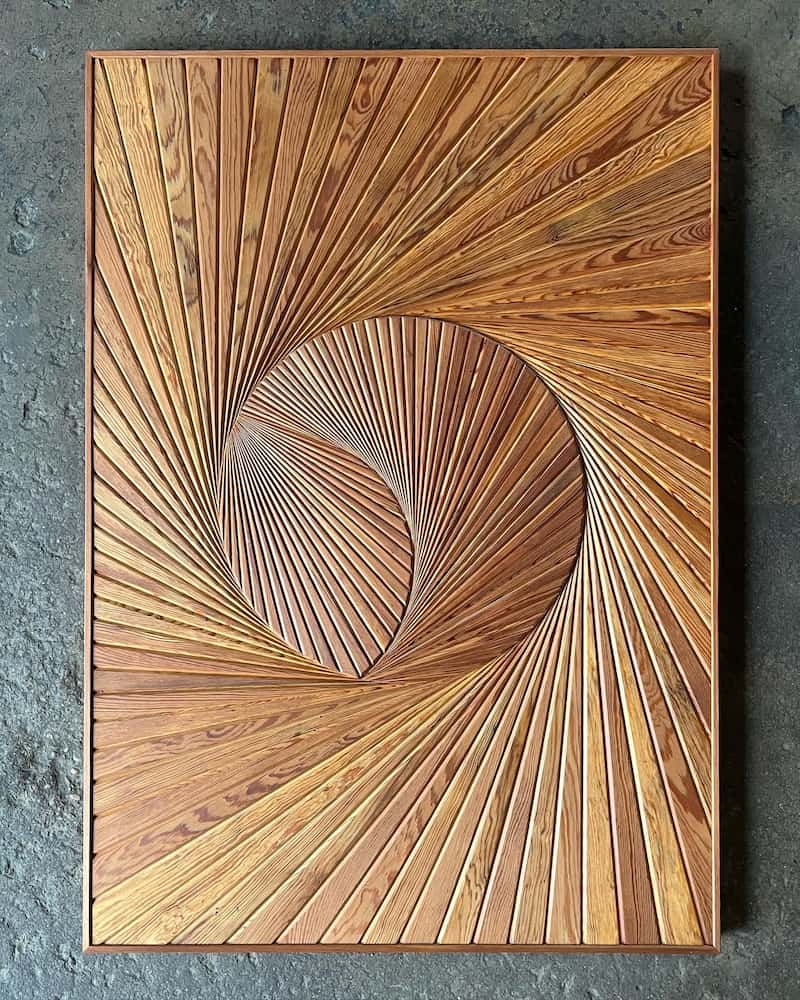
Viewer’s Choice: Aaron Michalovic
Aaron Michalovic, CEASELESS, 2023. Reclaimed longleaf pine, 33 x 44 x 2 inches.
This work, which uses only reclaimed wood from a historic house in East Austin, Texas, uses repetition to show movement and rhythm.
About the Artist:
Inspired by hand-made, process-evident building and art making, Aaron Michalovic has an eye for color and meticulous detail. After moving to Austin from Maine in 2008, he started collecting reclaimed materials that were being thrown away as houses in his neighborhood were torn down, and with these he began experimenting with color, texture and pattern, creating beautiful wood collages. As a woodworker, Aaron has a passion for the use of hand tools and works in many different styles, including timber frame structures, furniture, and hand-carved usable goods.
Juried Selections
Learn More
Click on the tabs below to learn more about each artist featured in the 30th Annual Juried Woodworking Exhibition.
Upcoming and Related Events
Rhythms Catalog
This 72-page, full-color catalog is a comprehensive look at Rhythms, the Wharton Esherick Museum’s 30th Annual Juried Woodworking Exhibition. This publication captures the innovative works of art, craft, and design by twenty-five artists whose work explores the rhythms that shape their creative lives. Each artwork in this year’s show is represented through imagery alongside artist statements and biographical information. The catalog also includes a welcome from WEM Executive Director Julie Siglin and an introduction from Emily Zilber, WEM Director of Curatorial Affairs and Strategic Partnerships.

